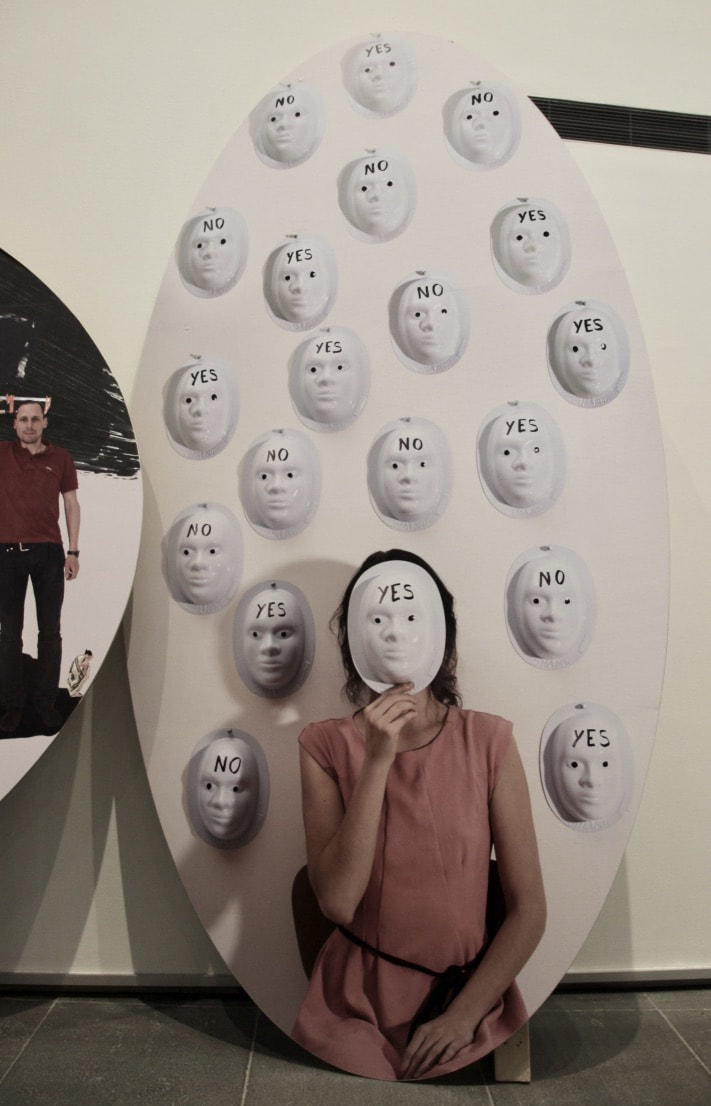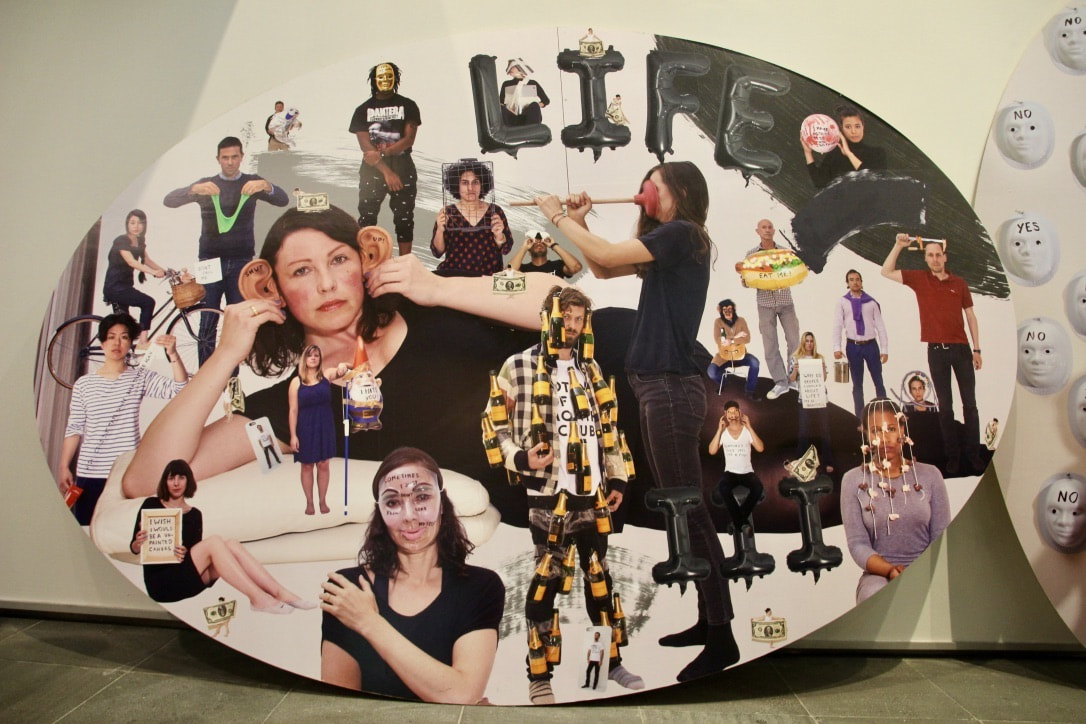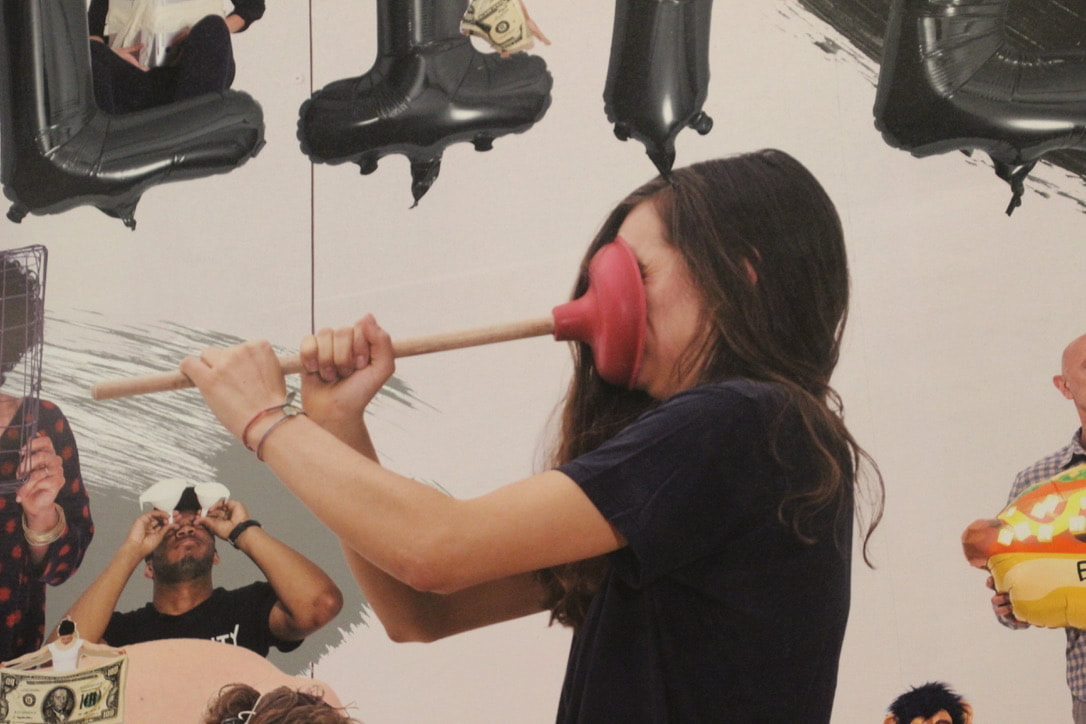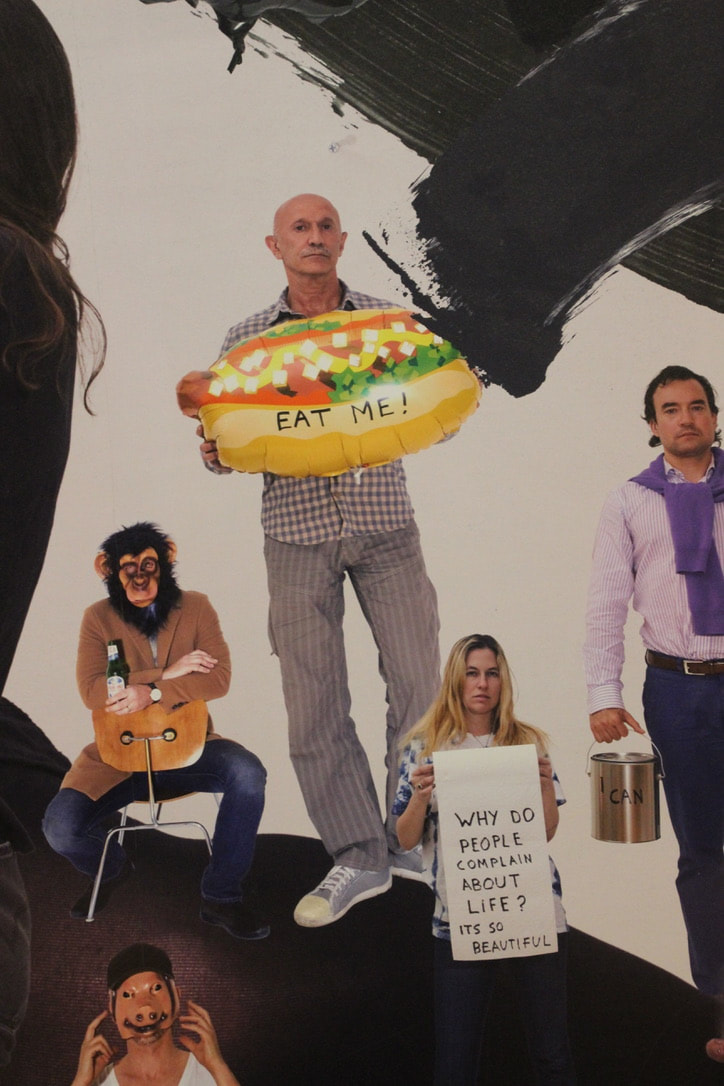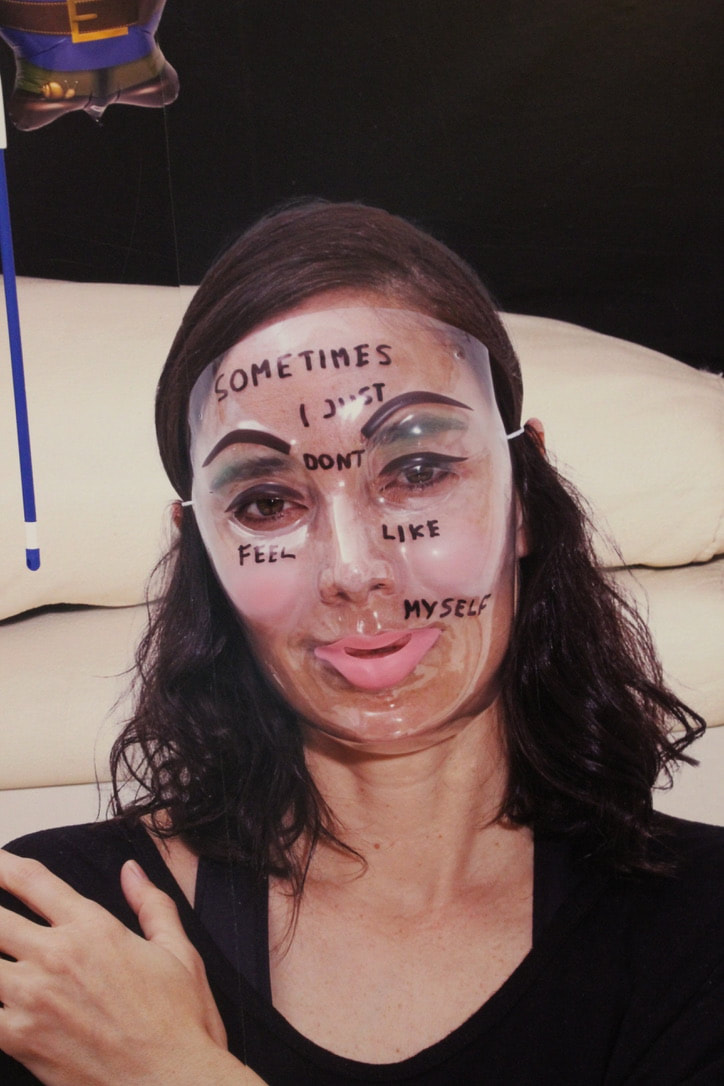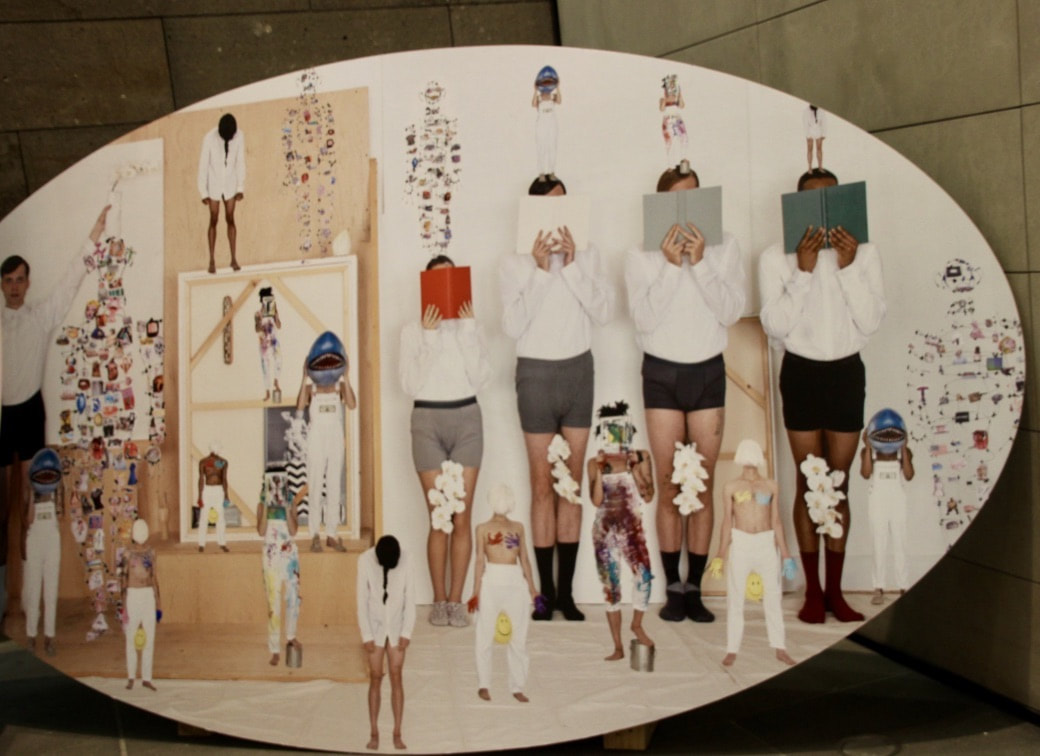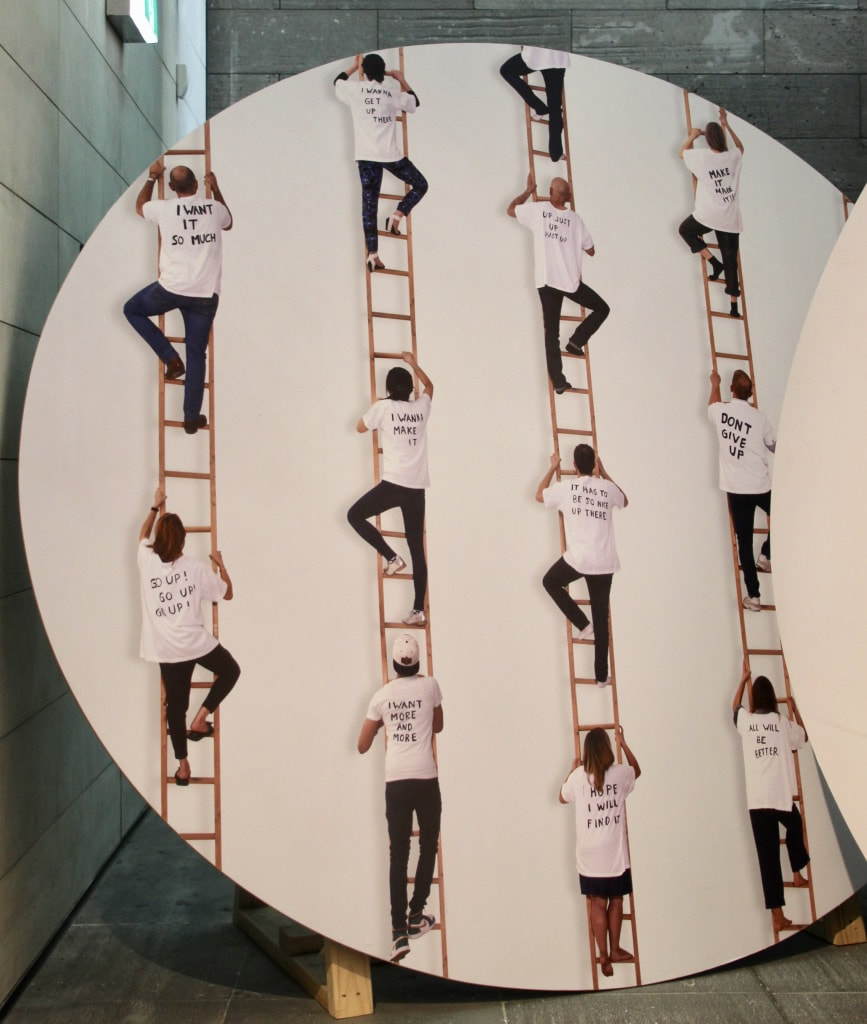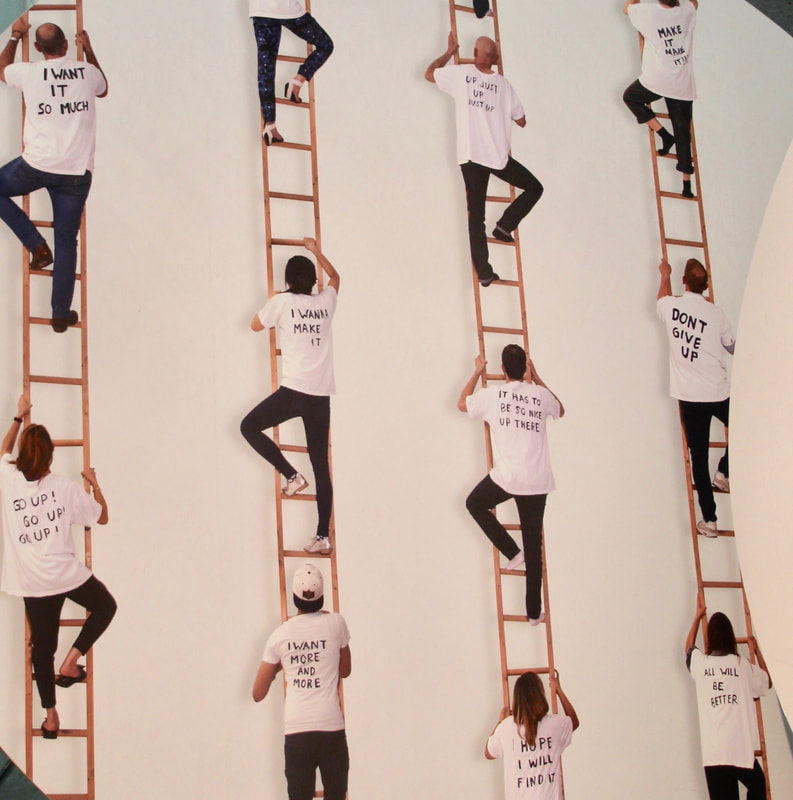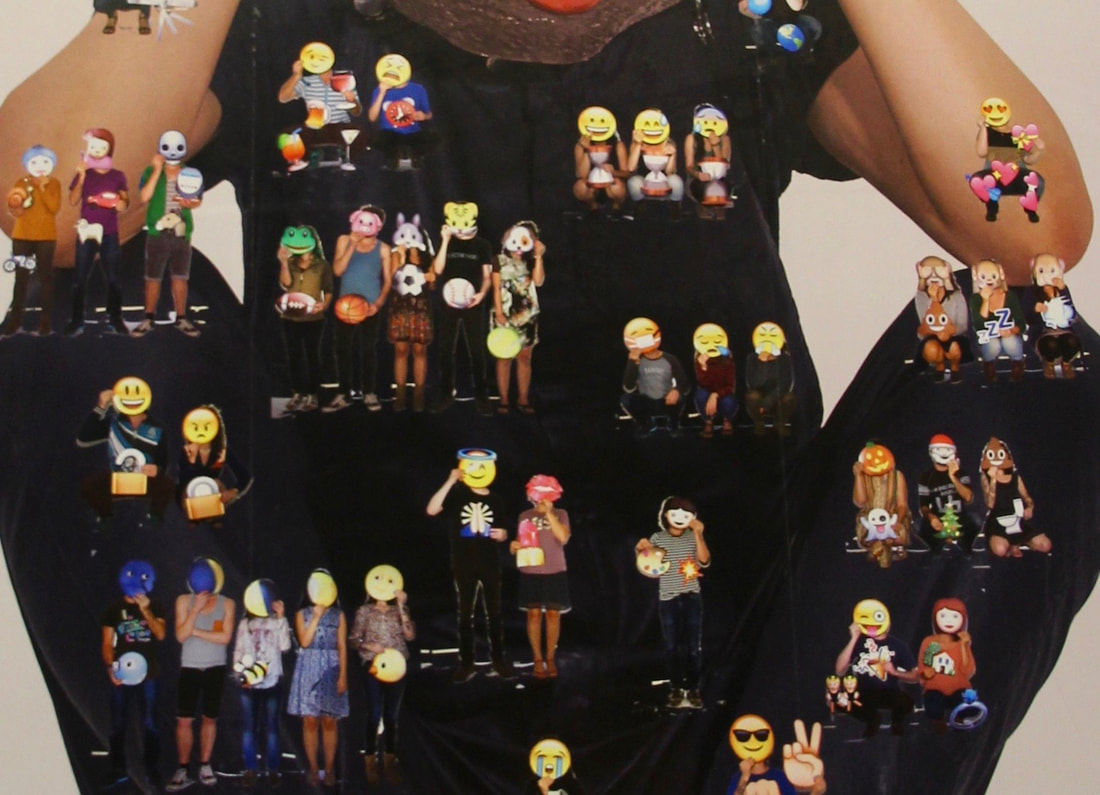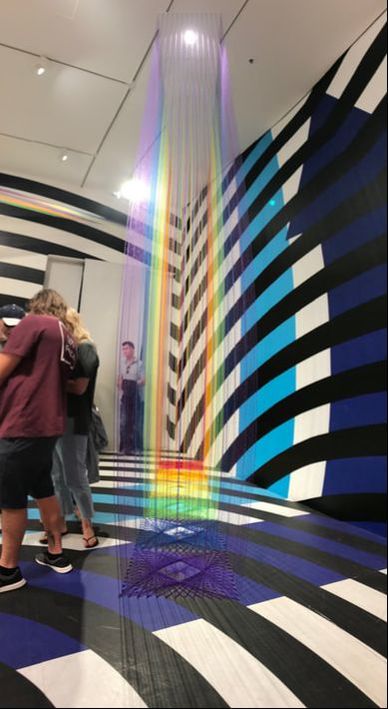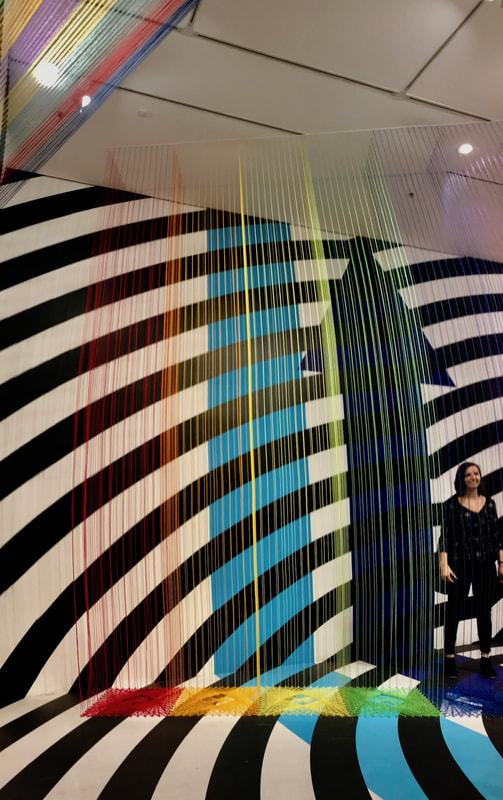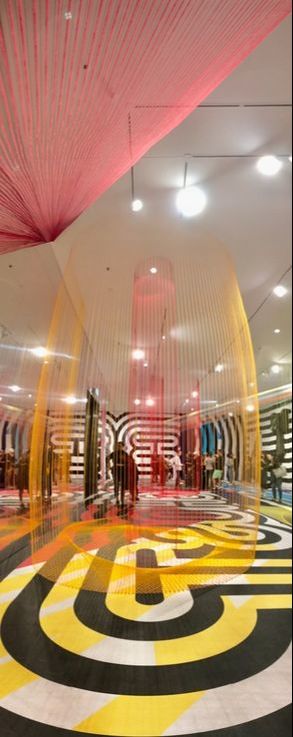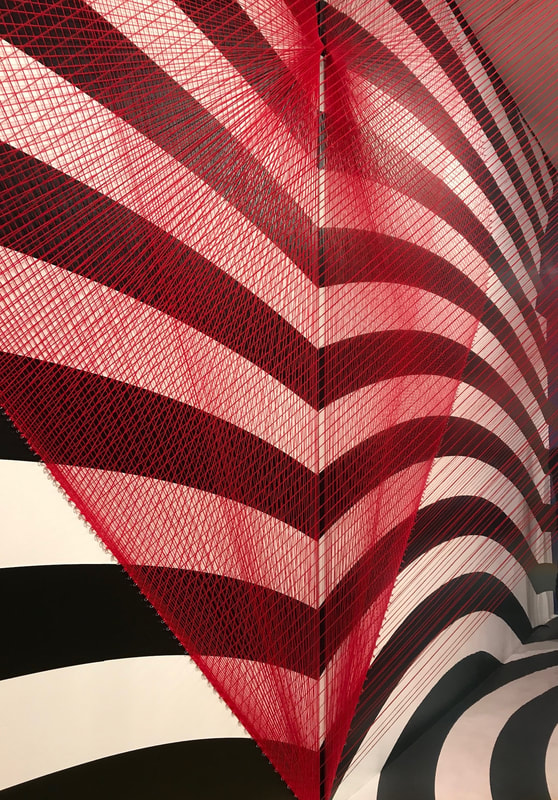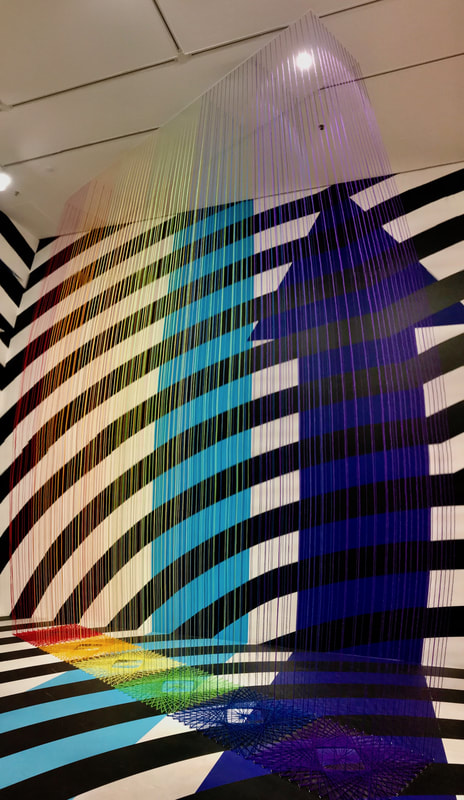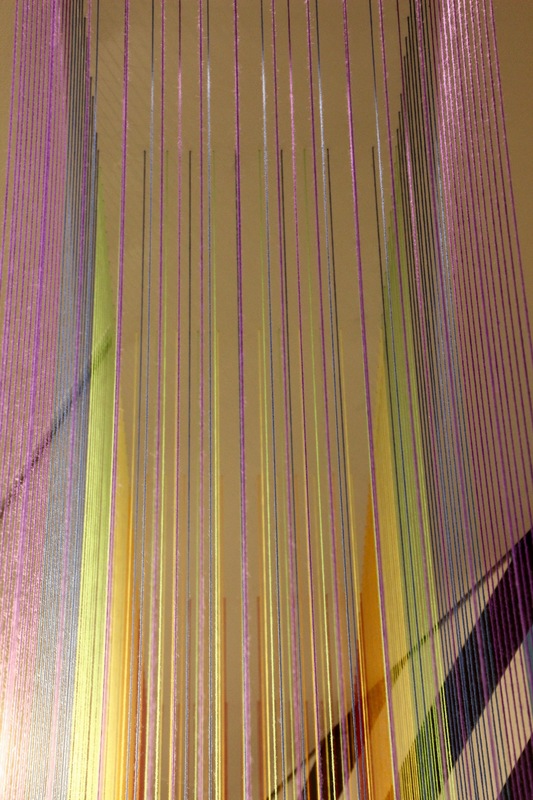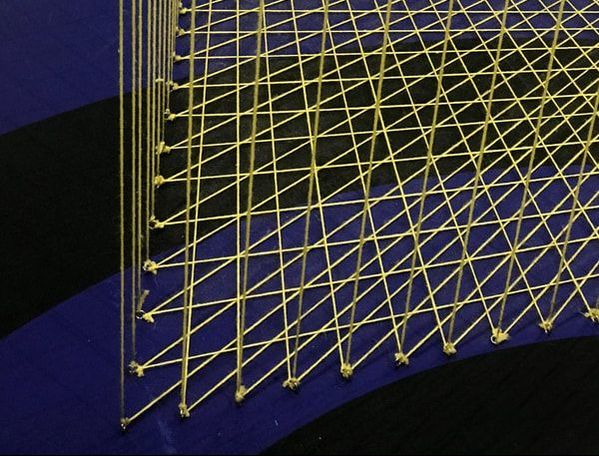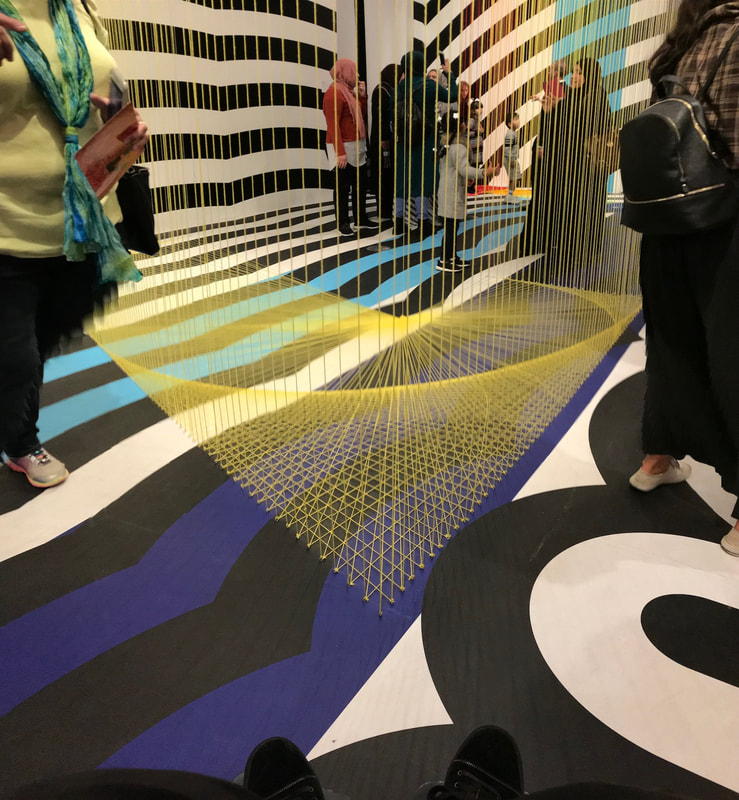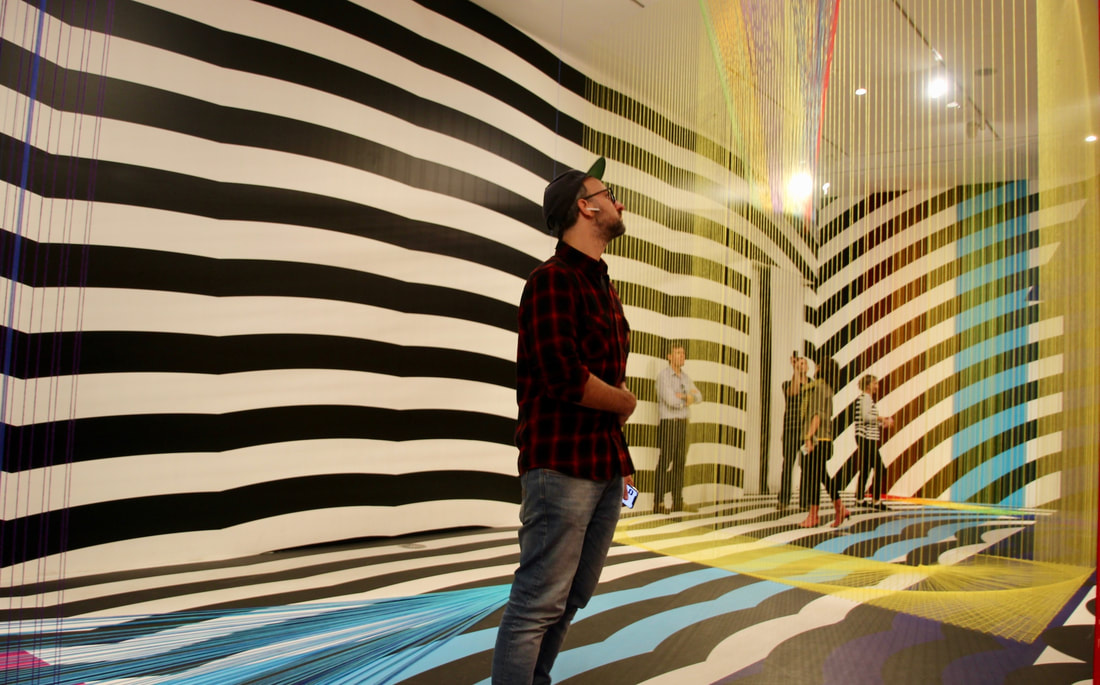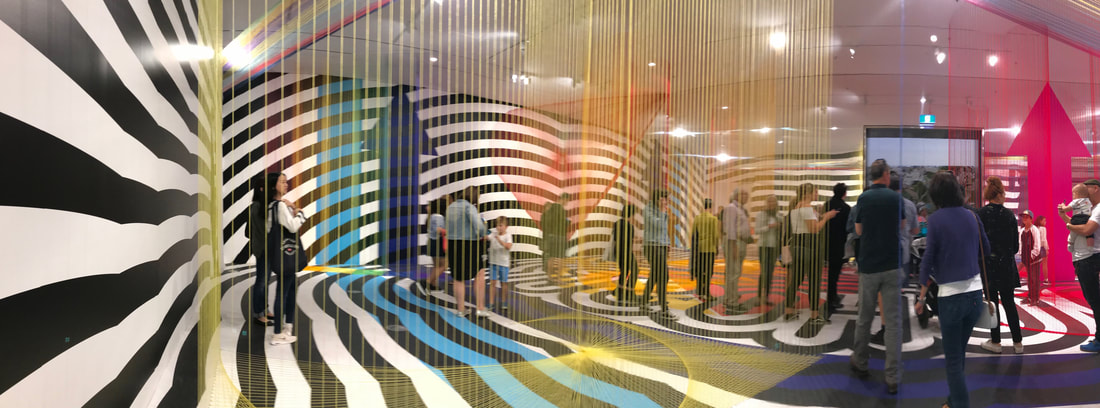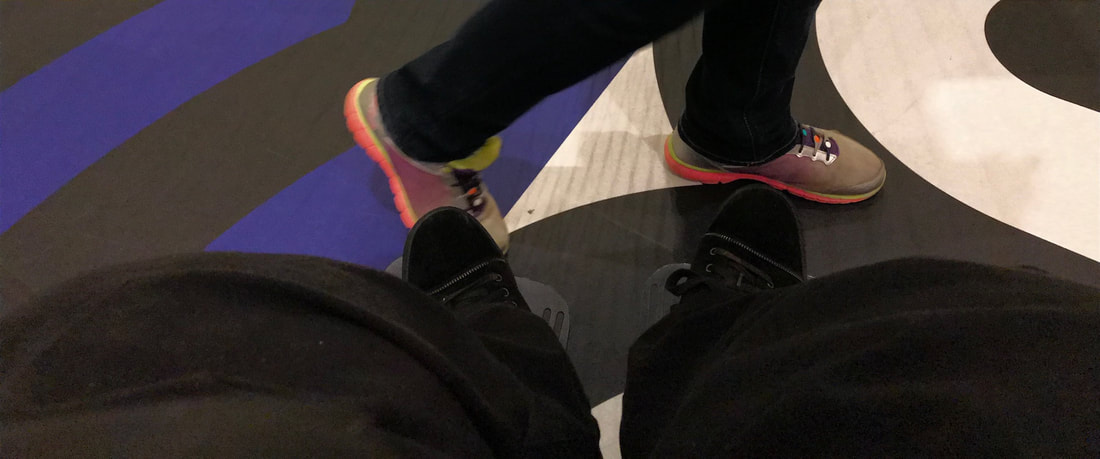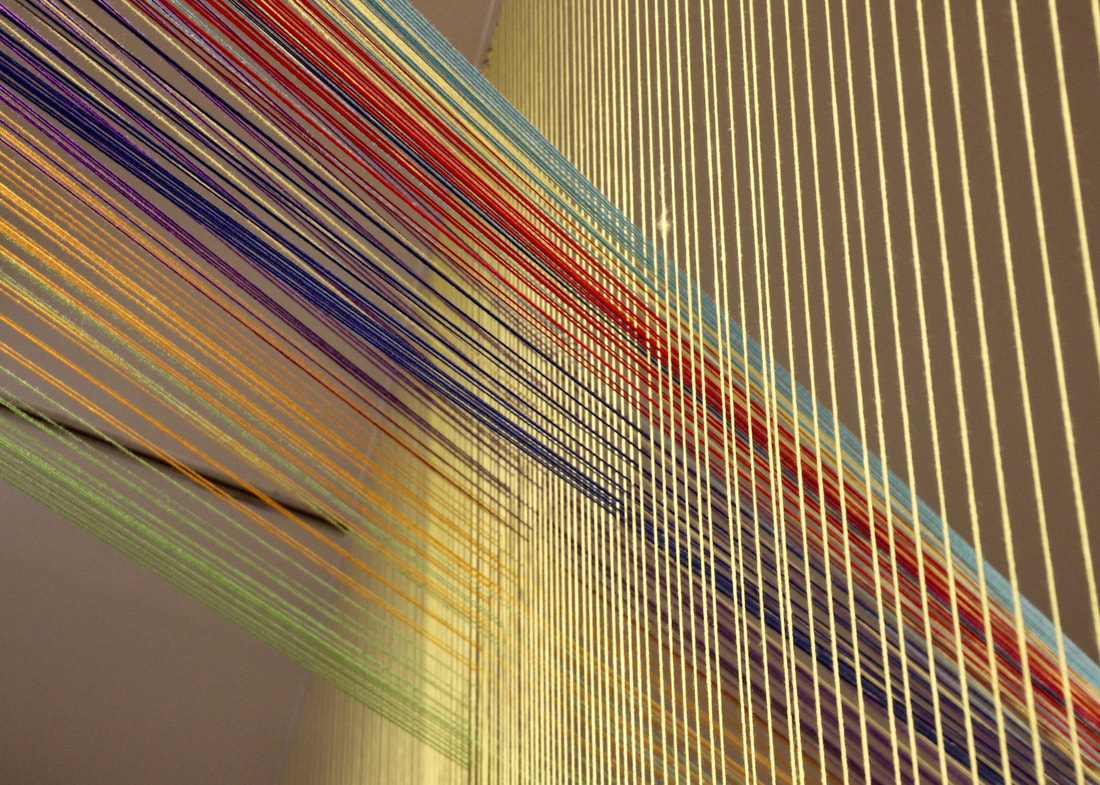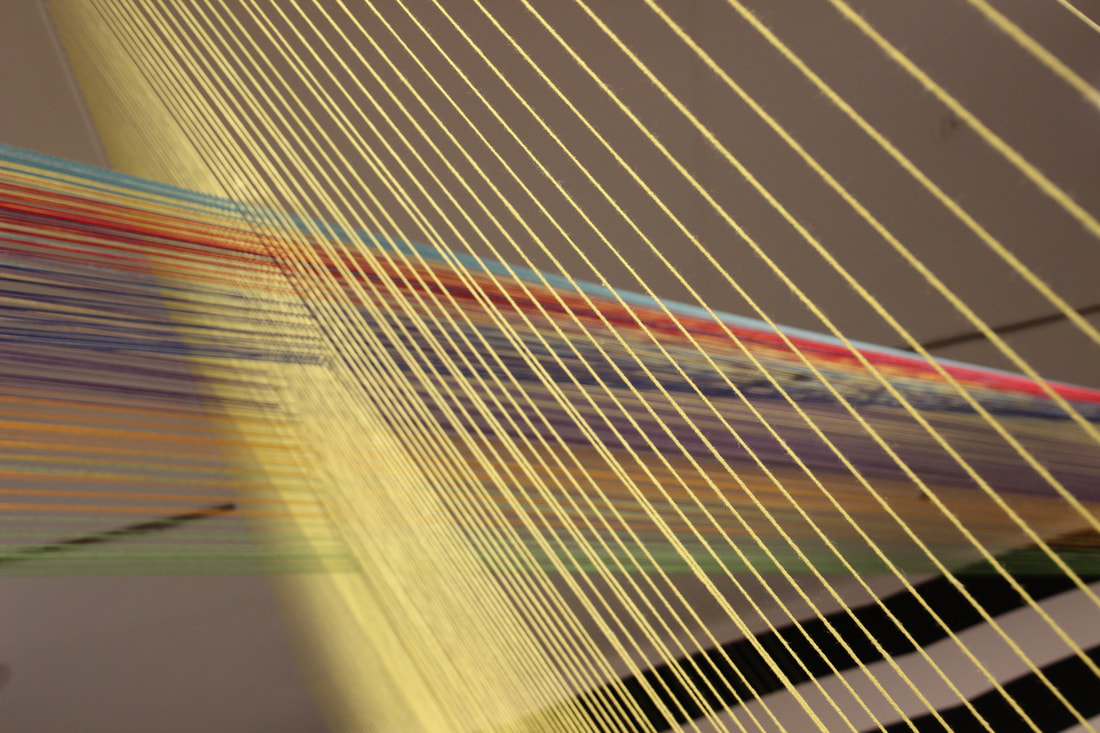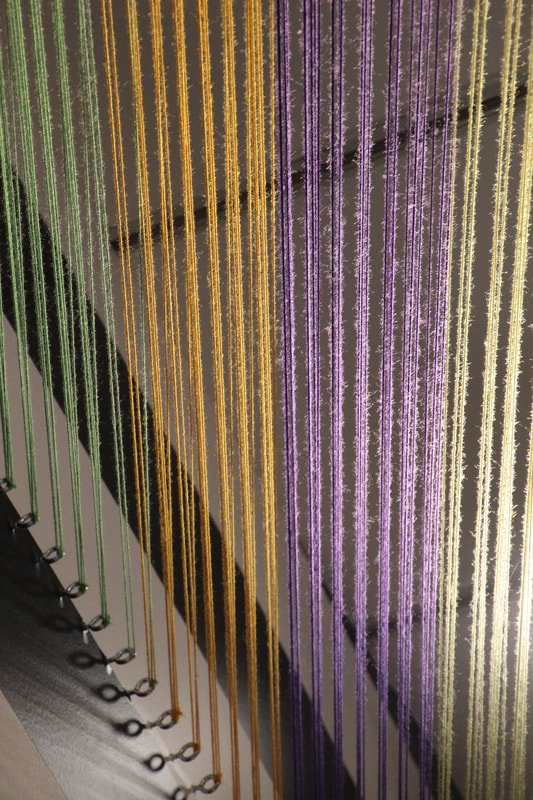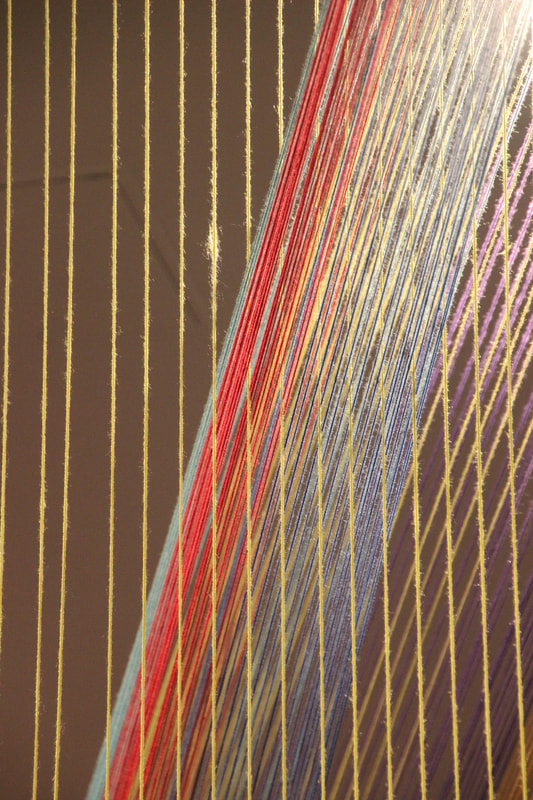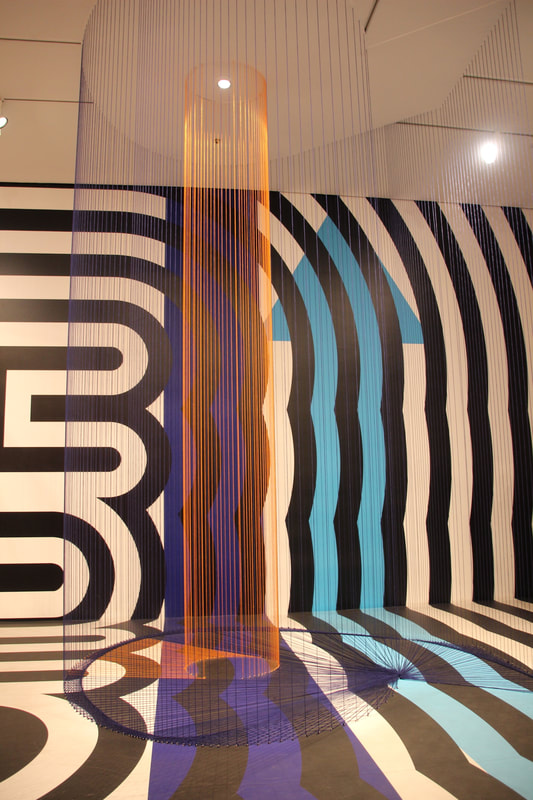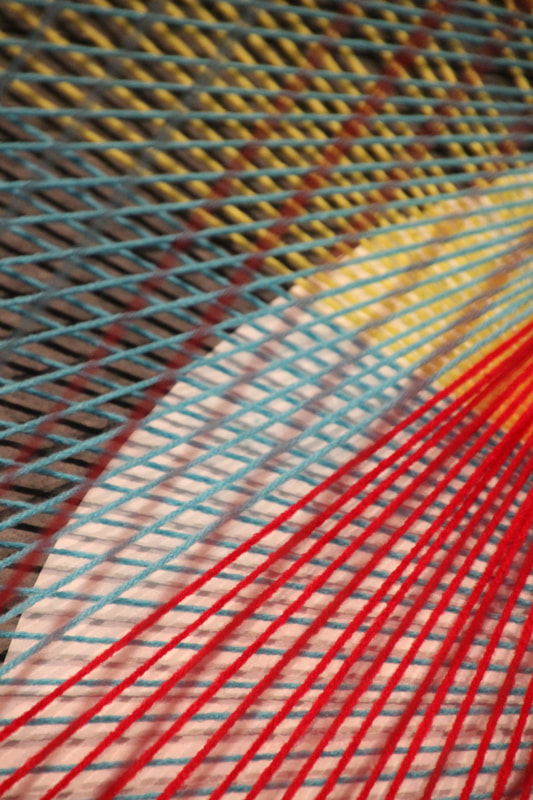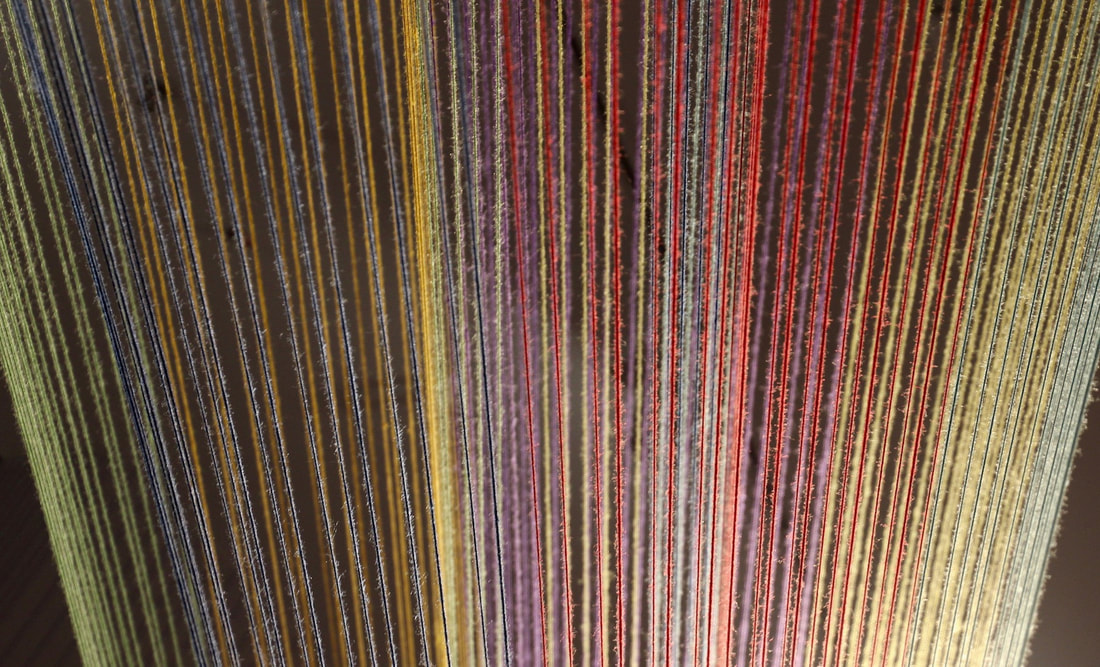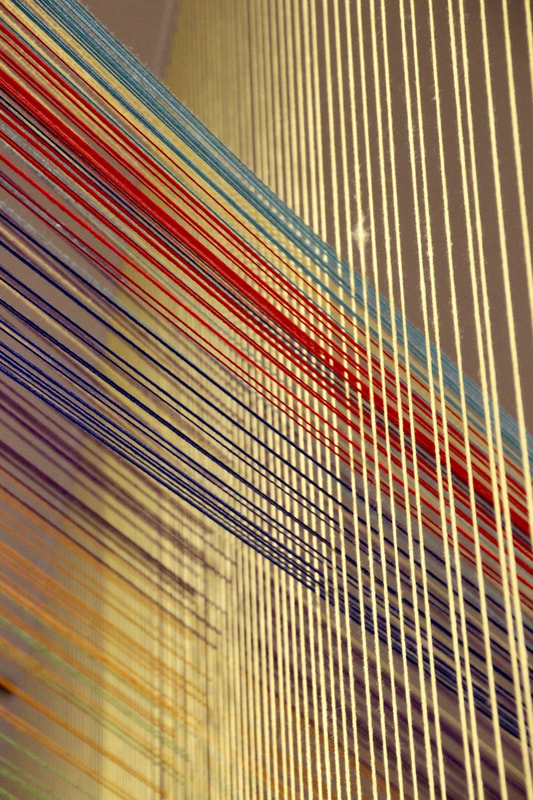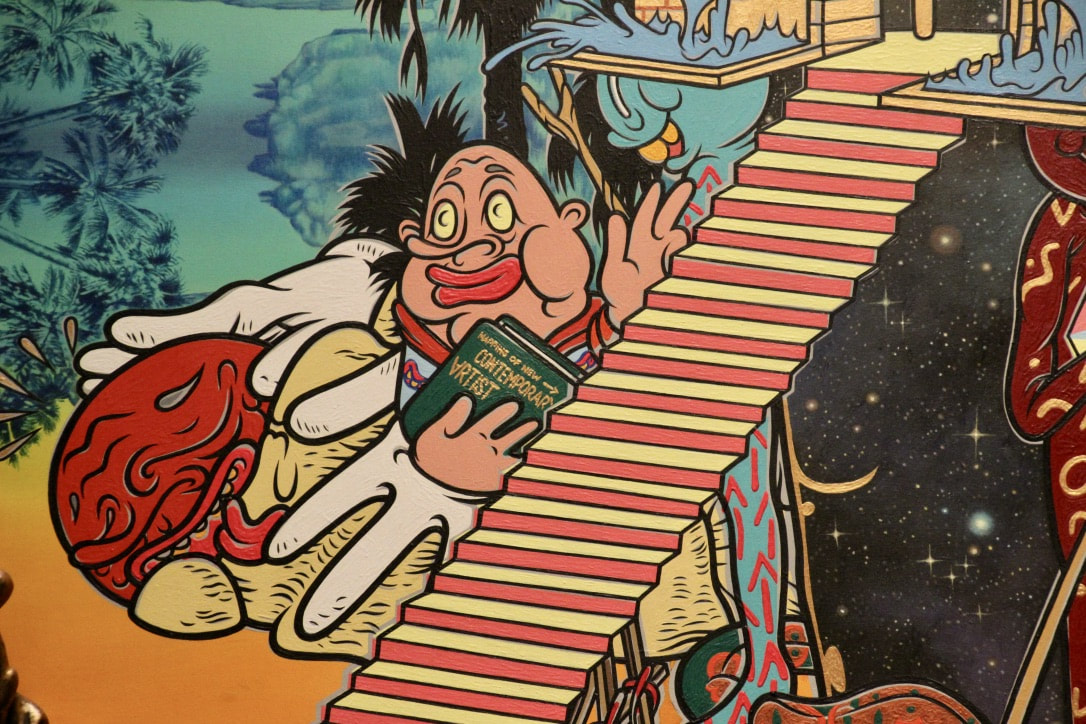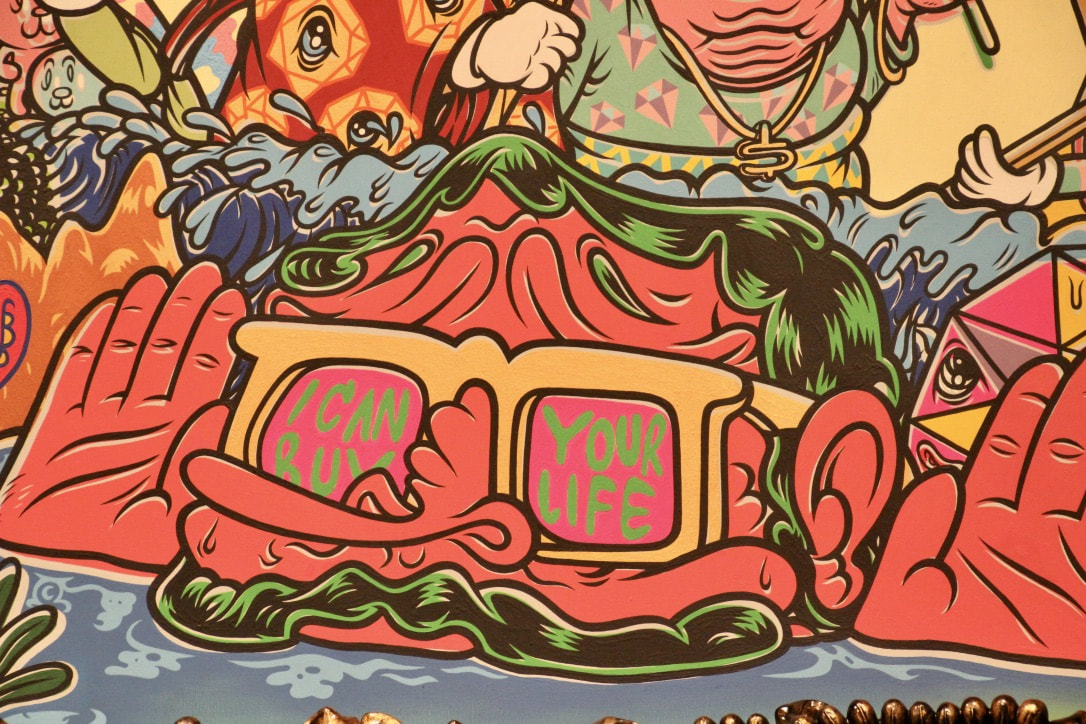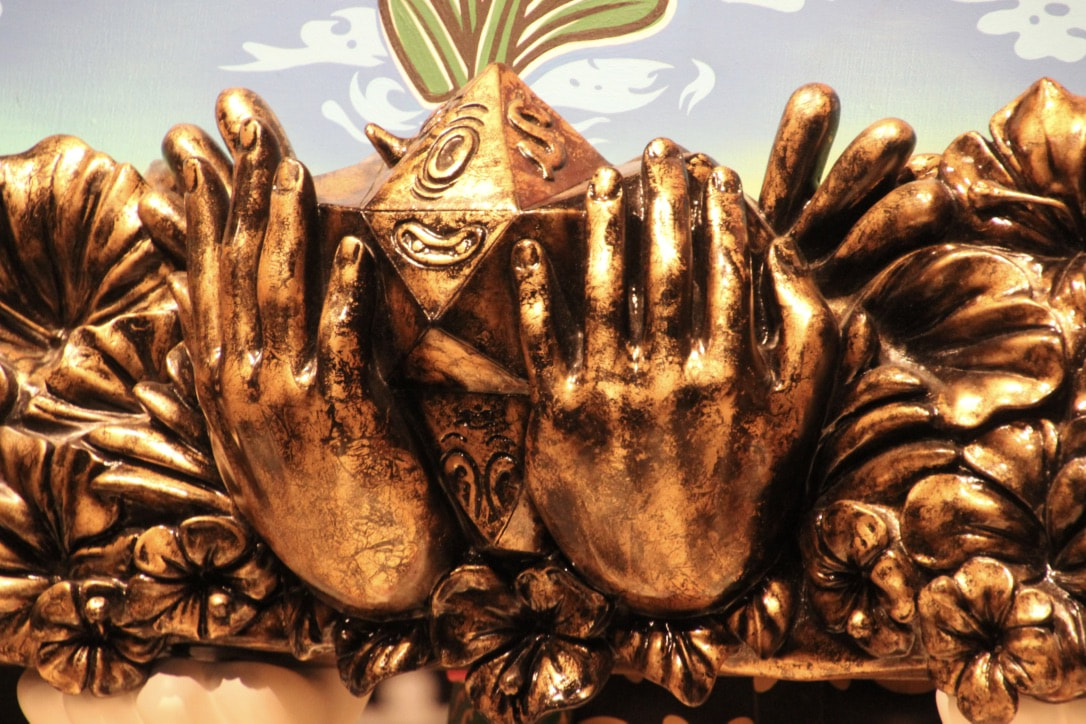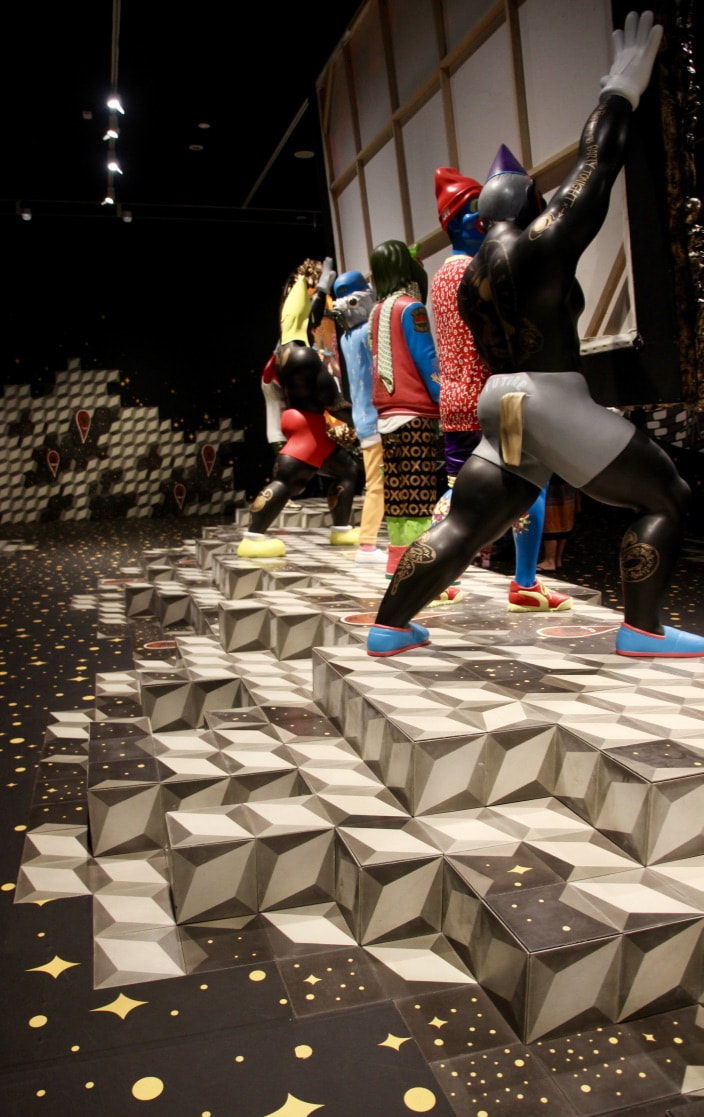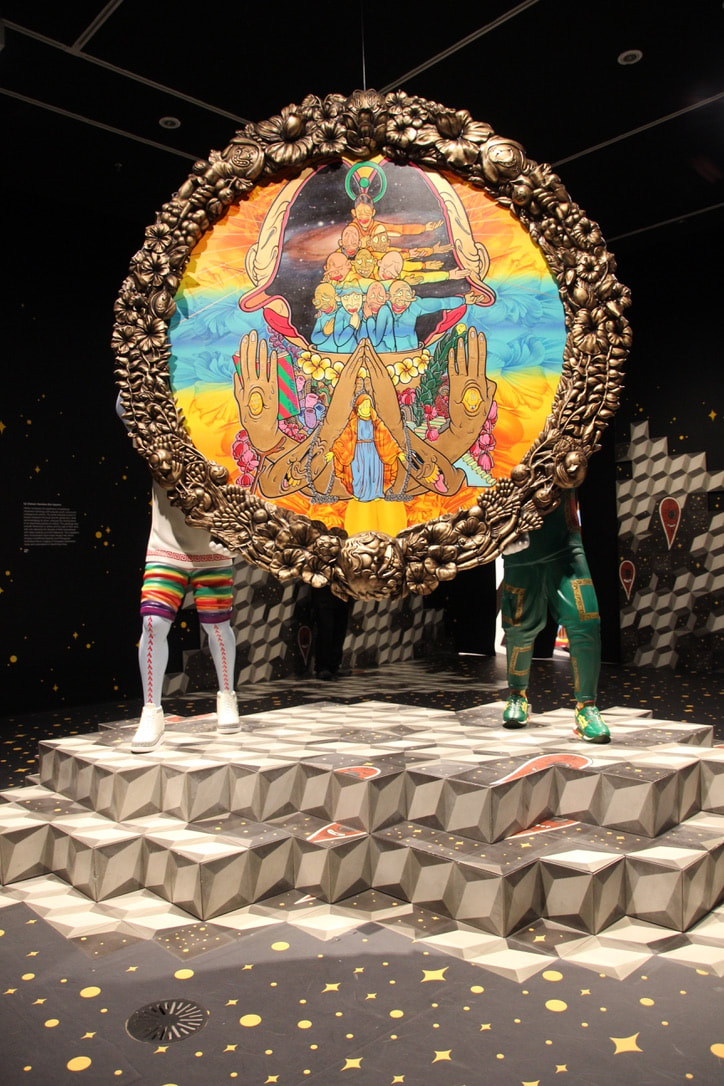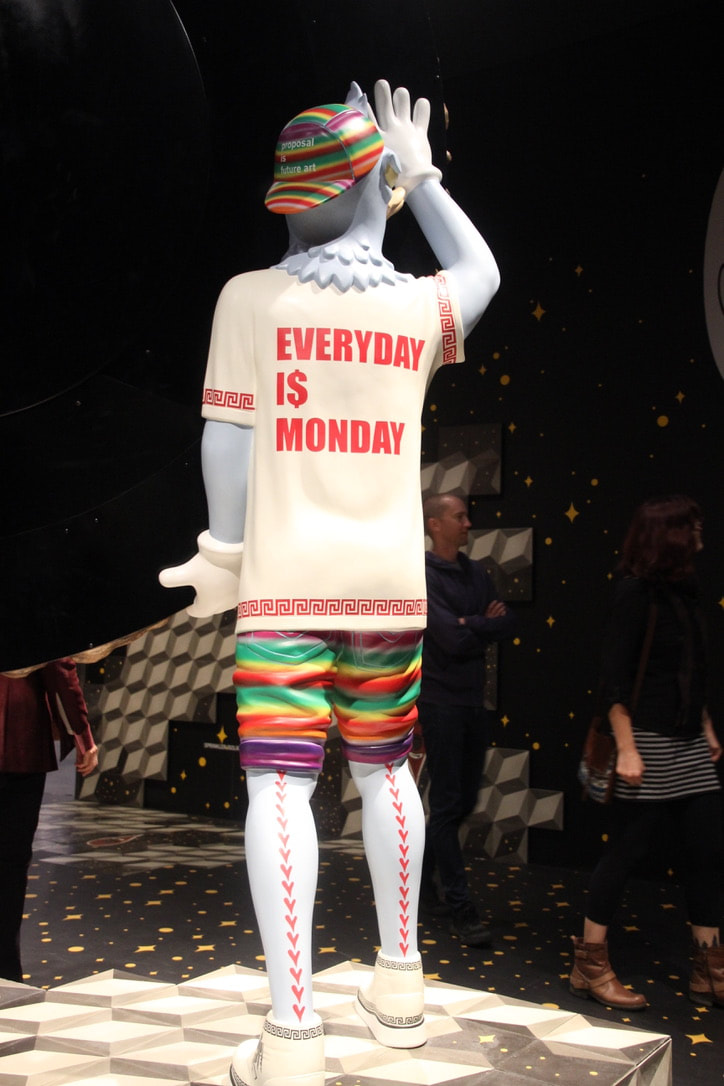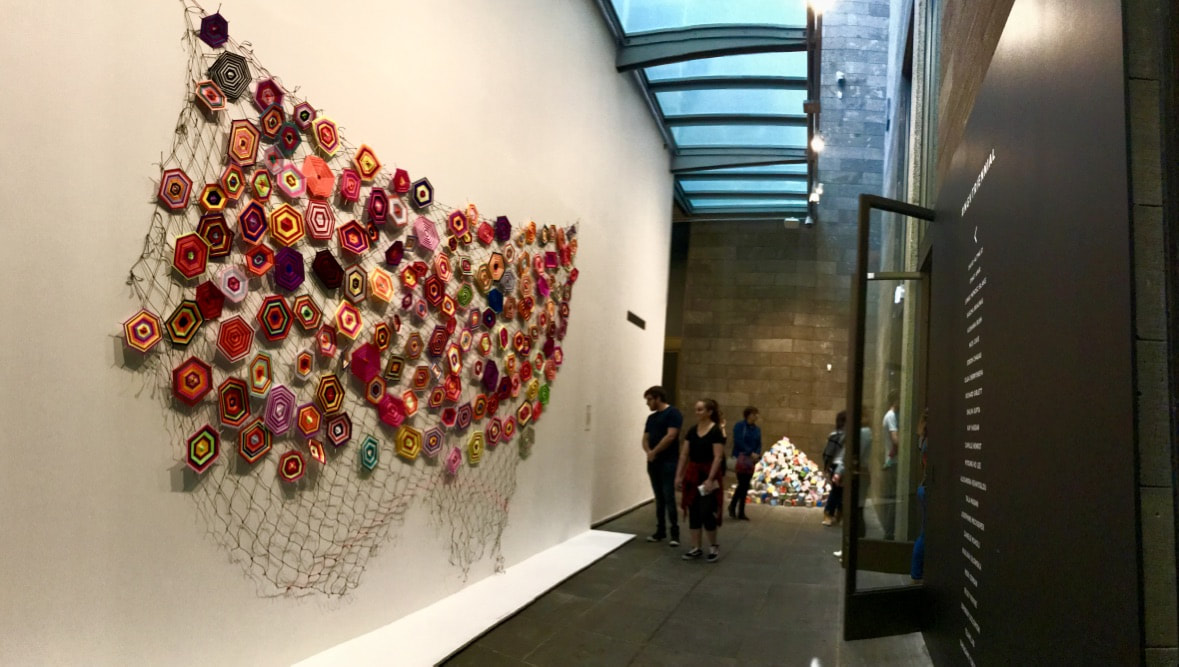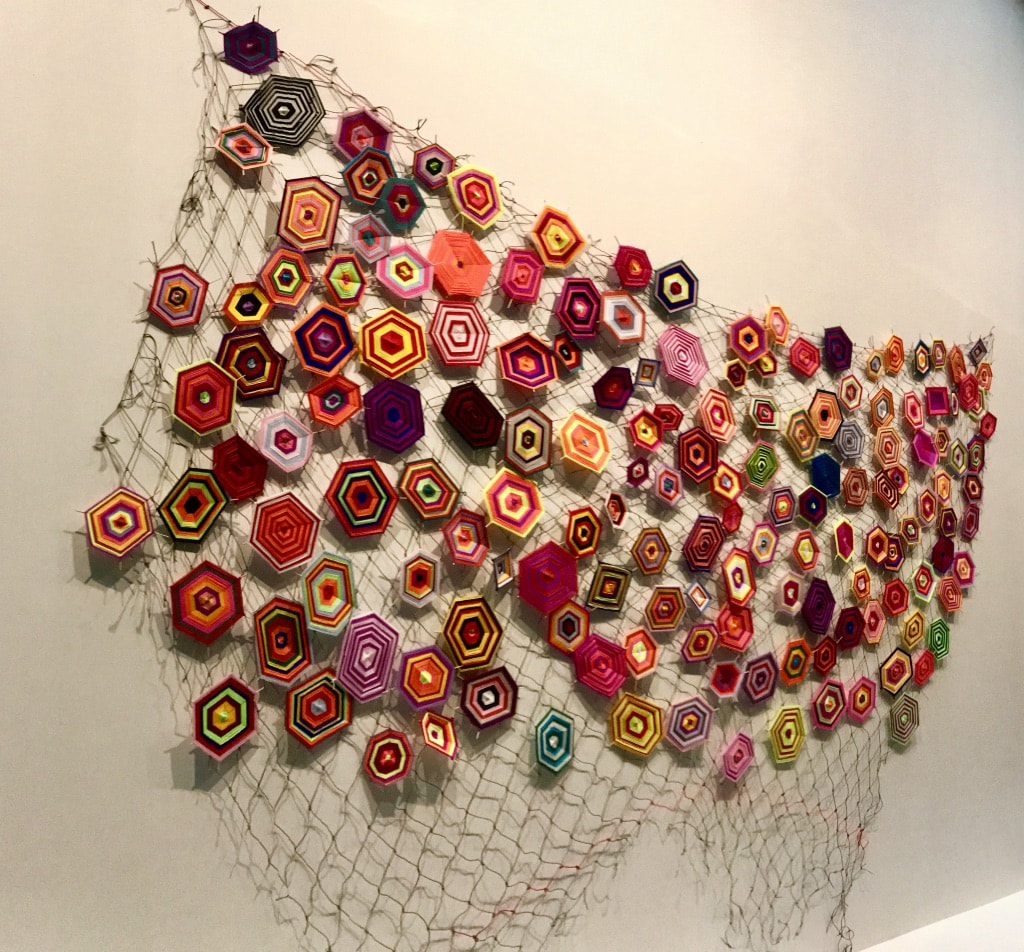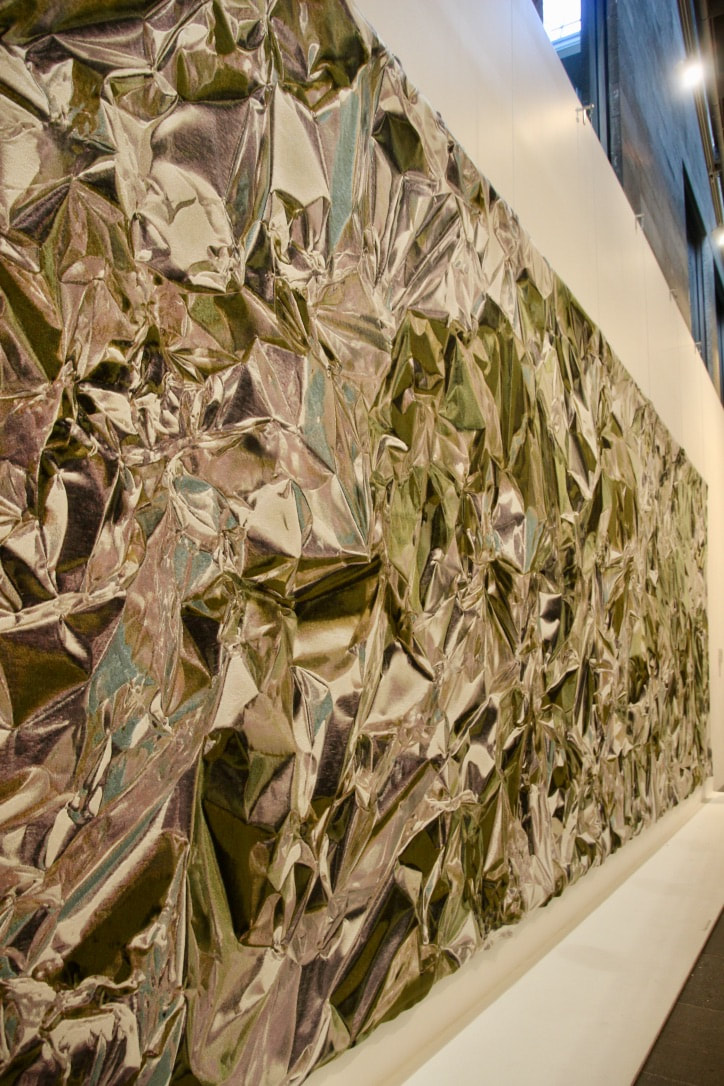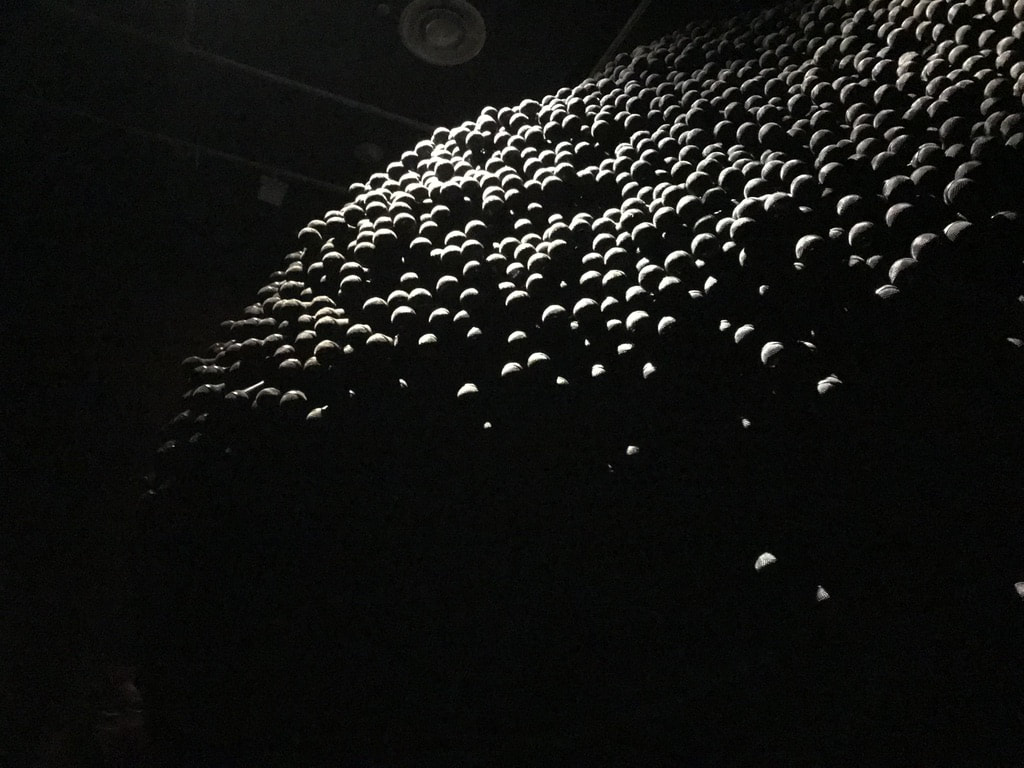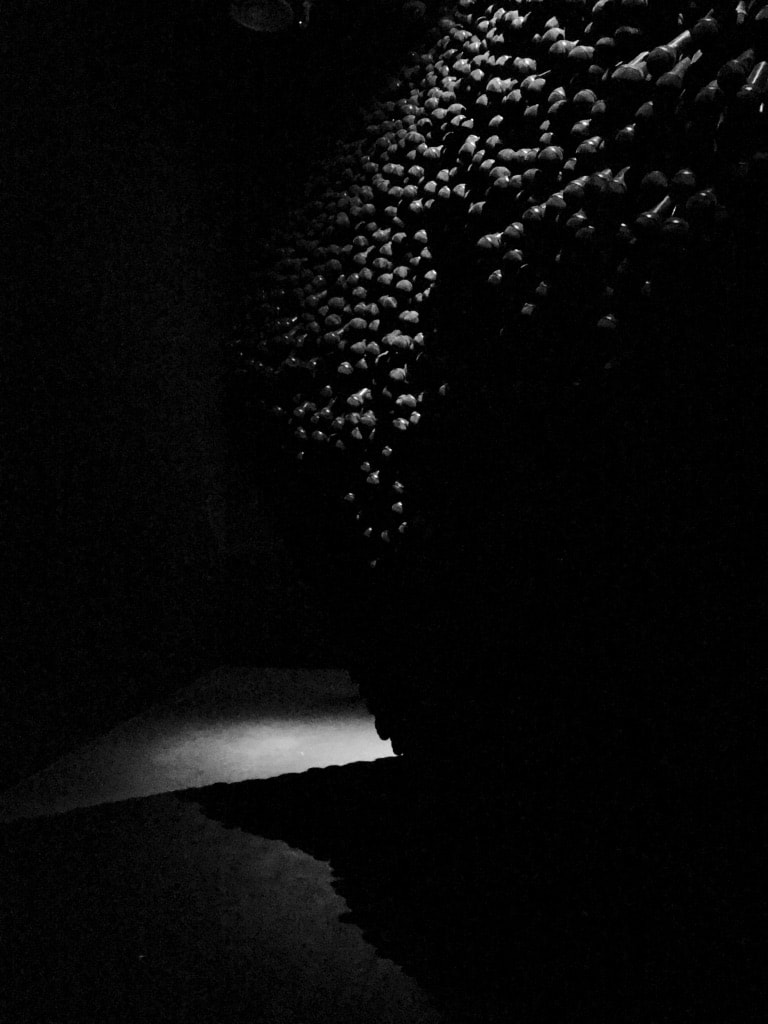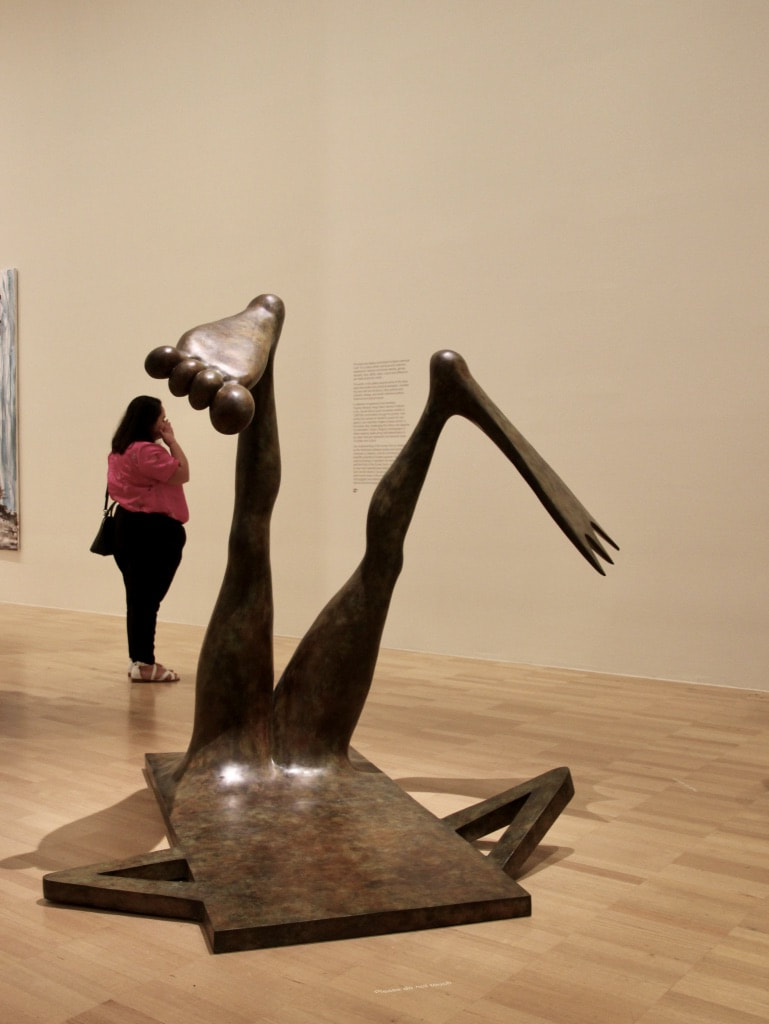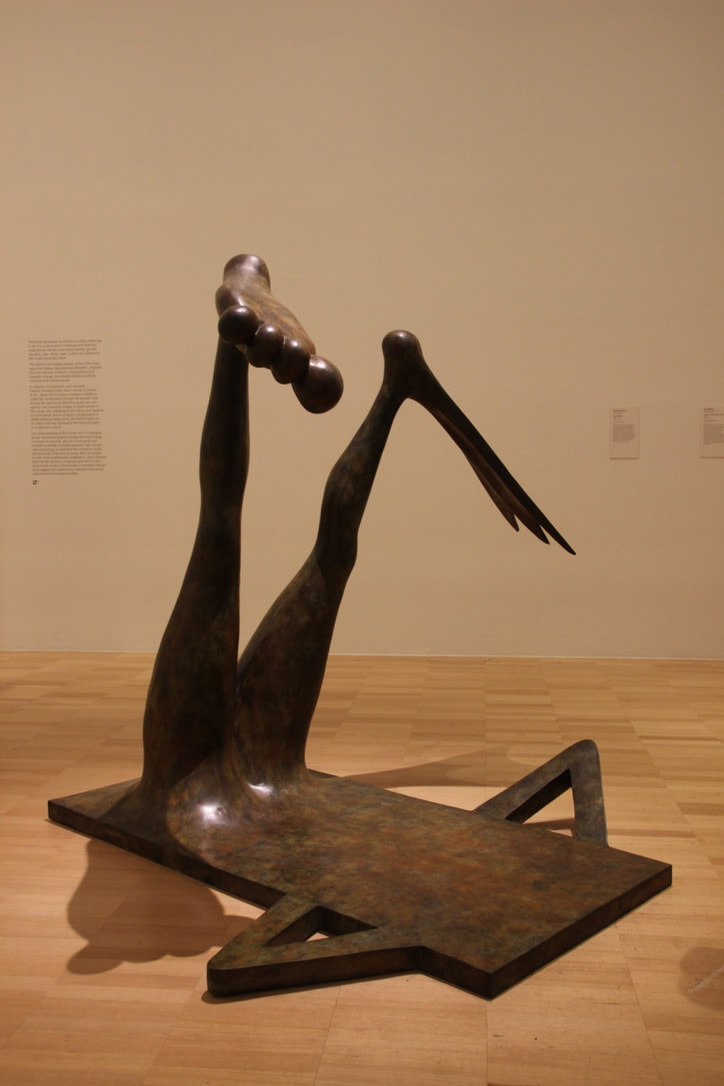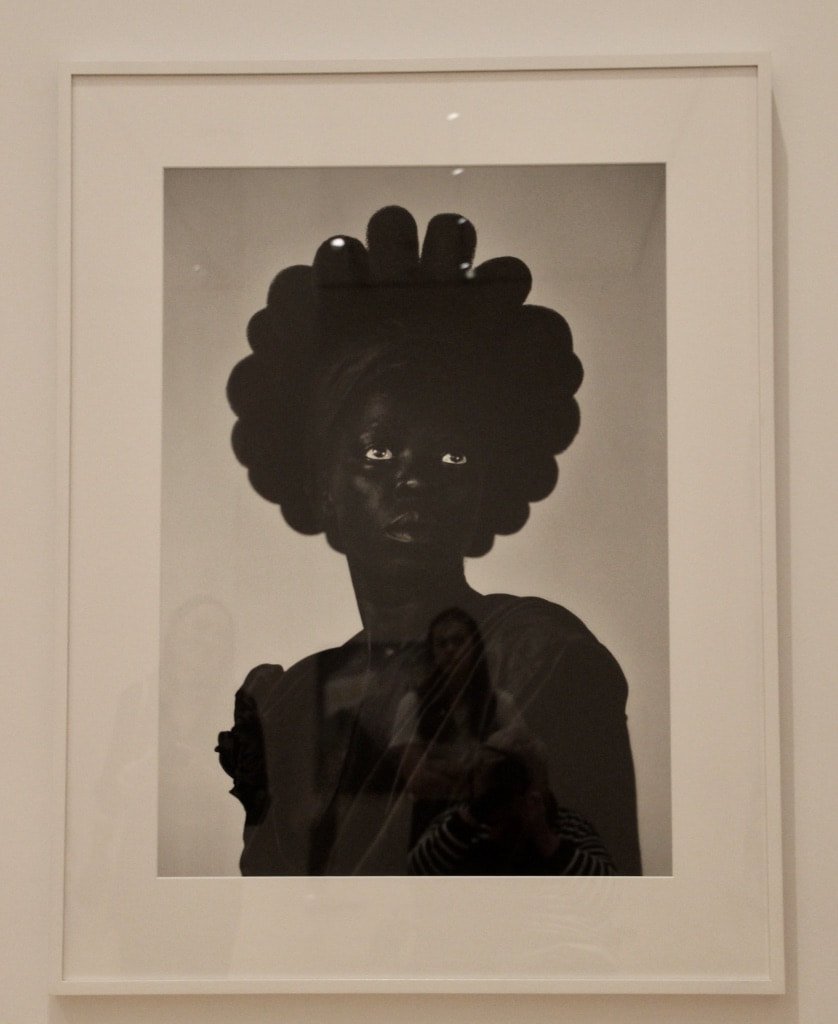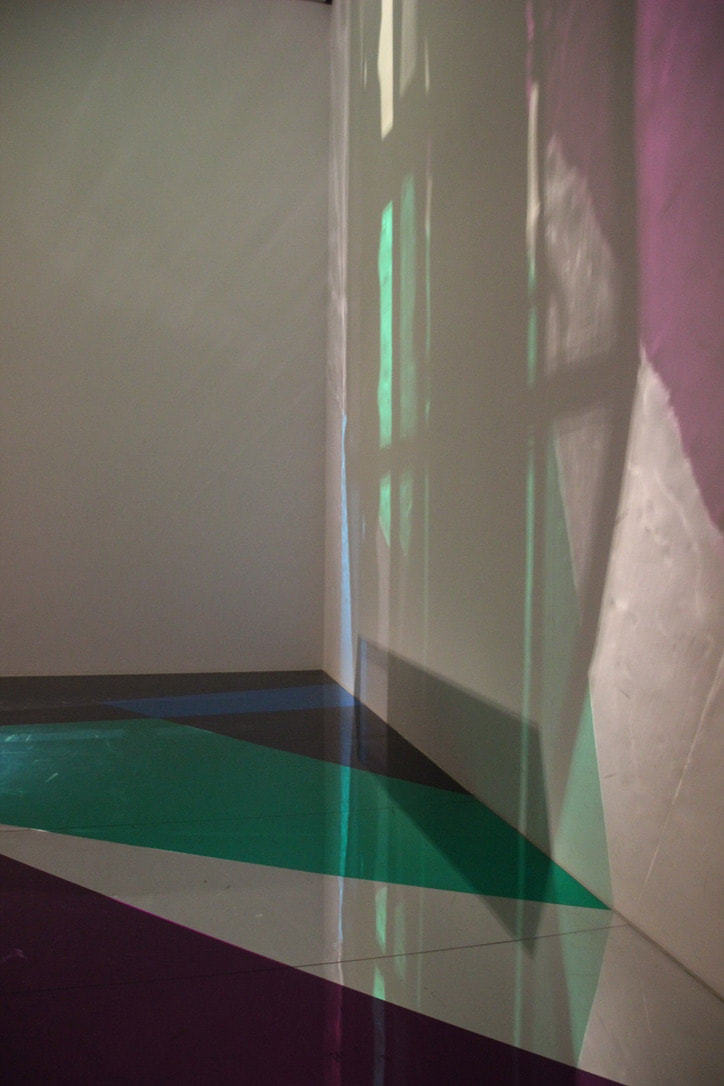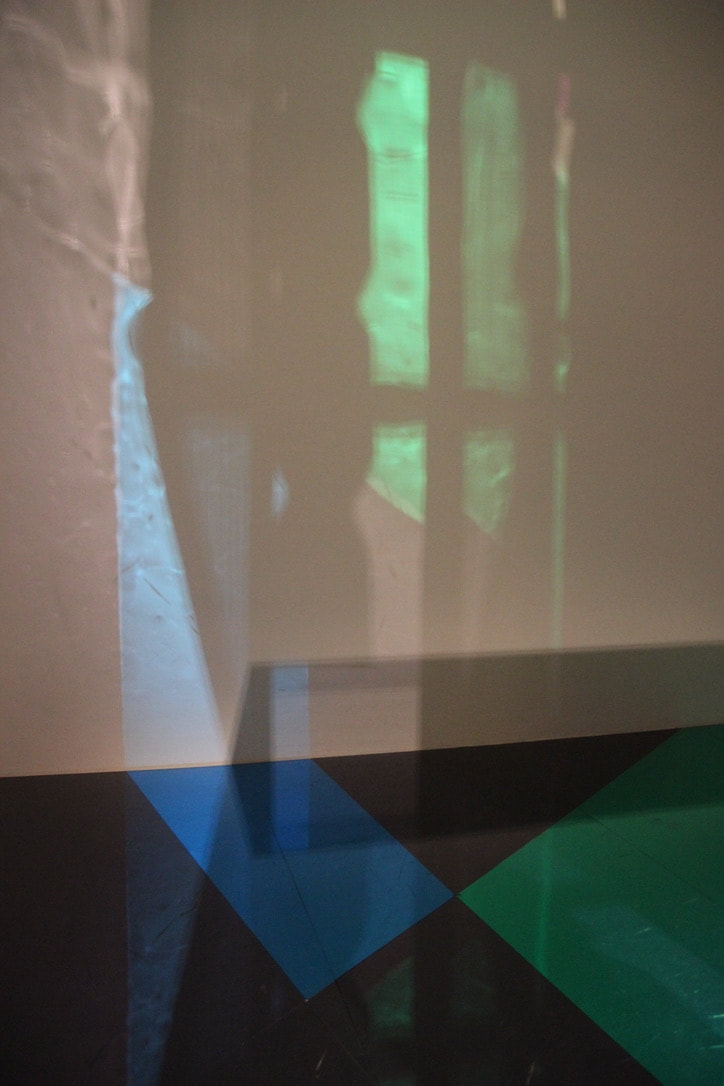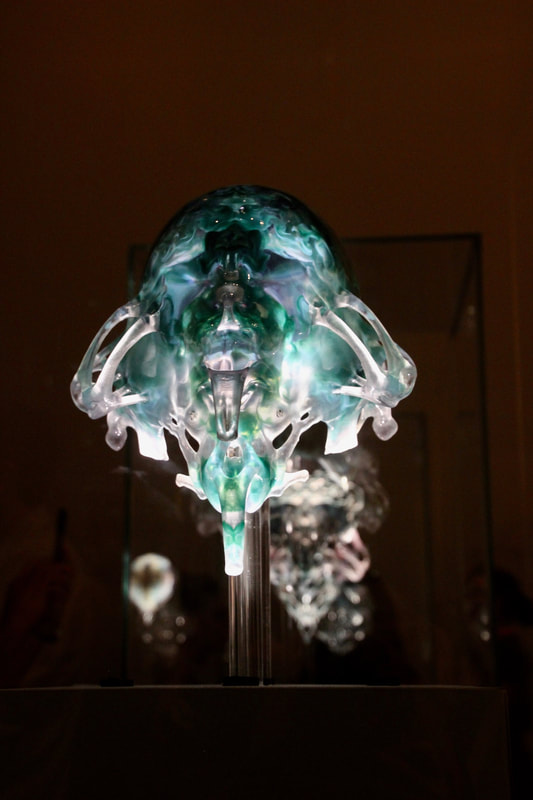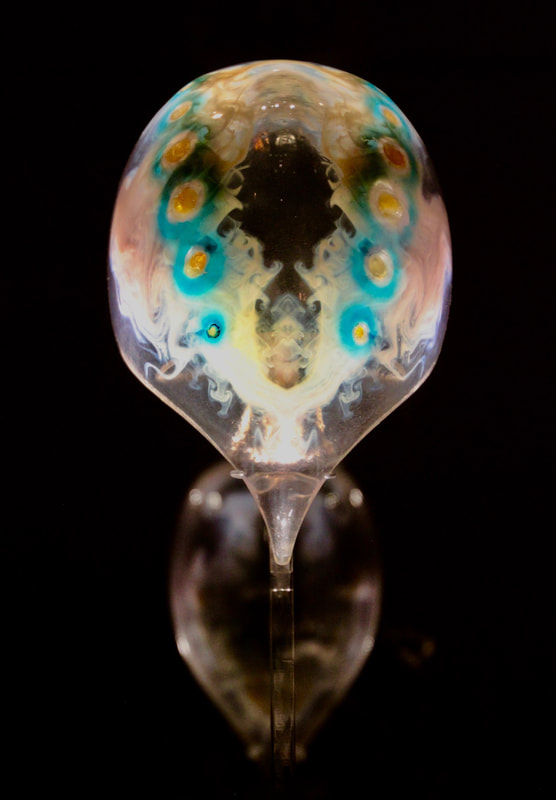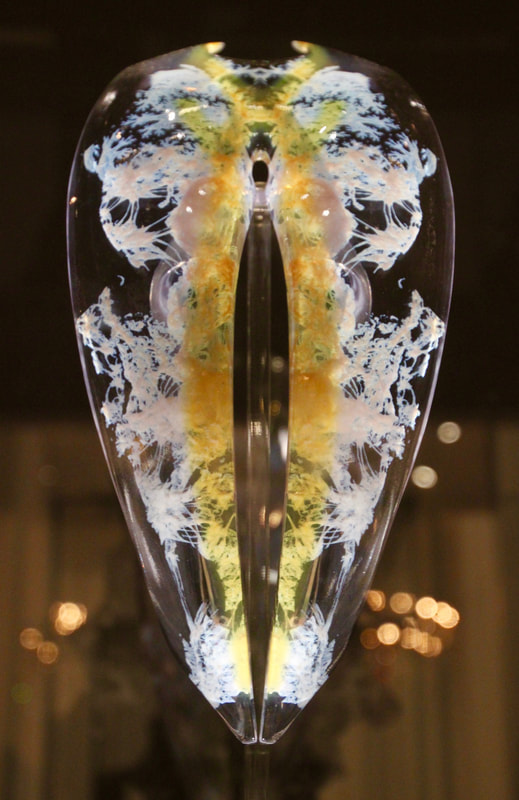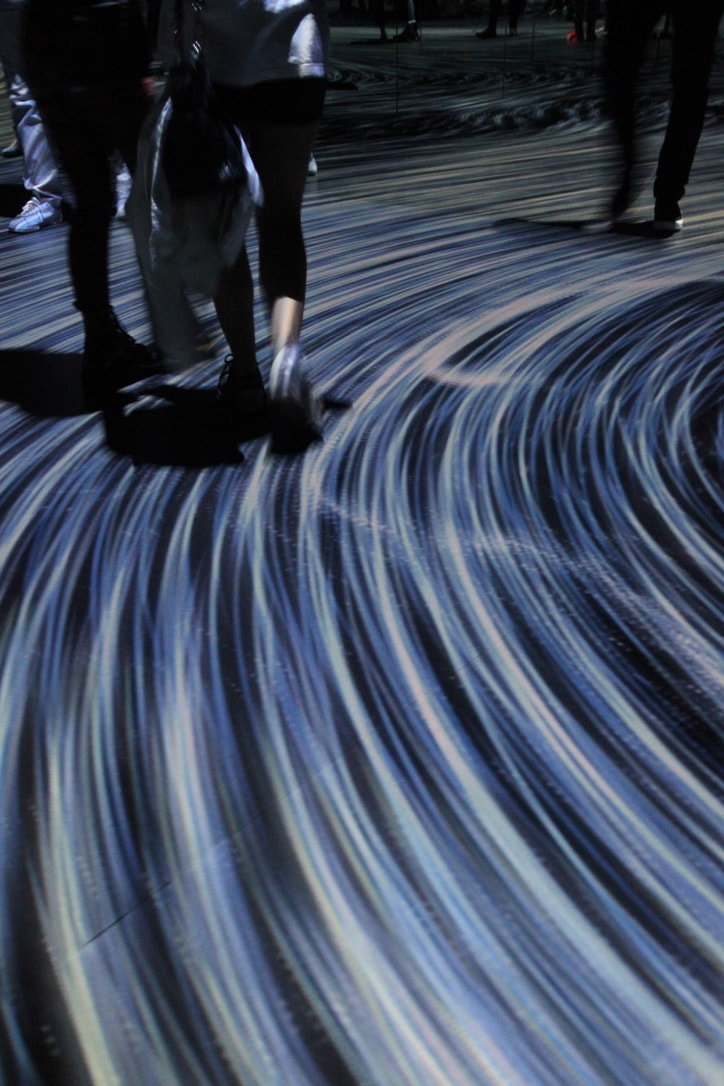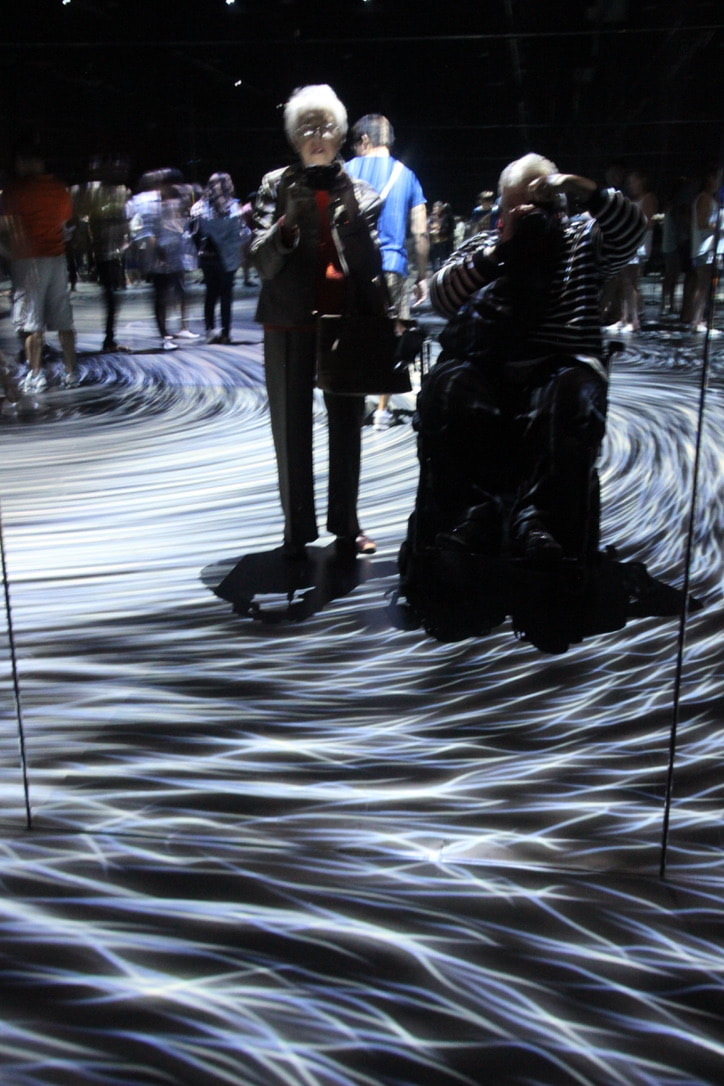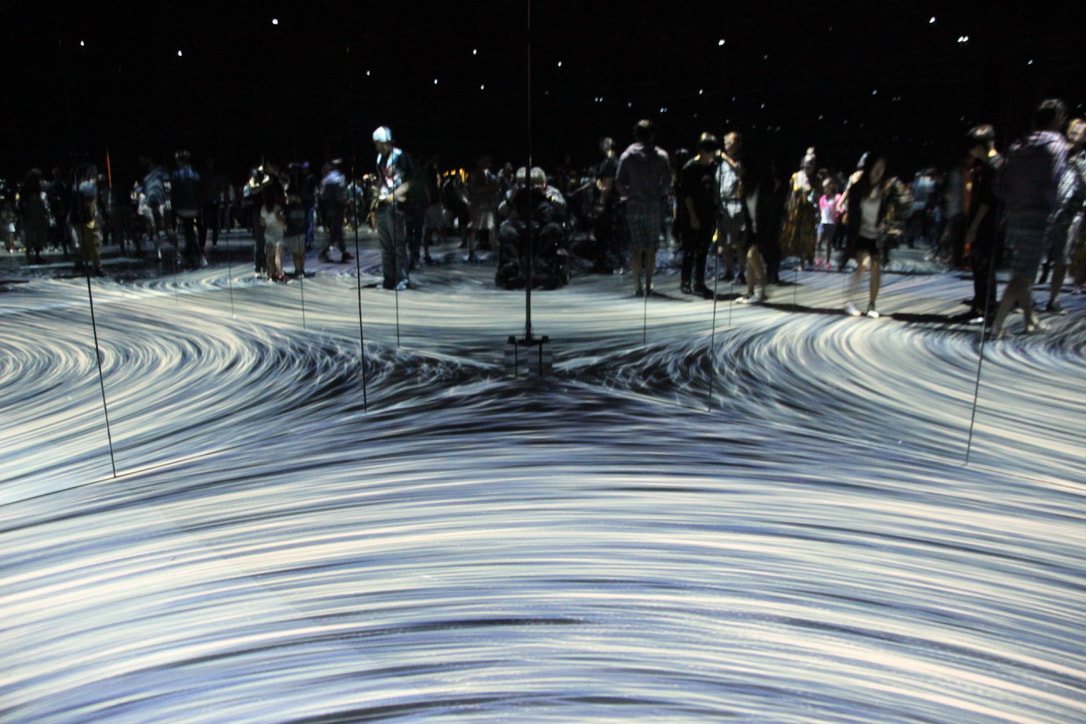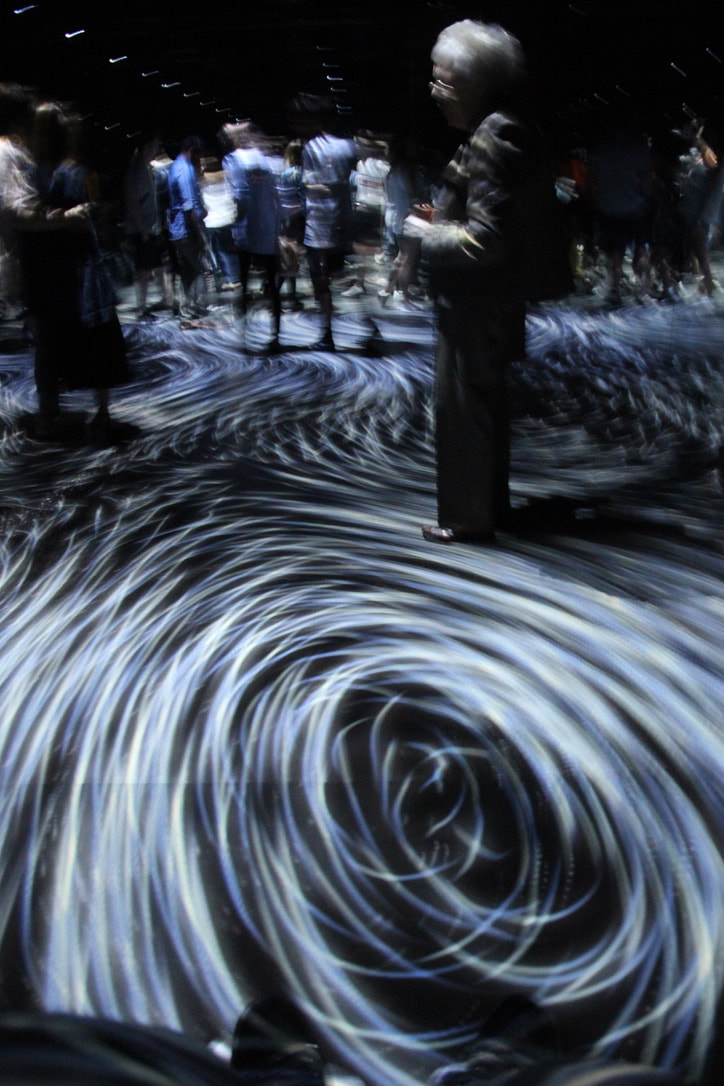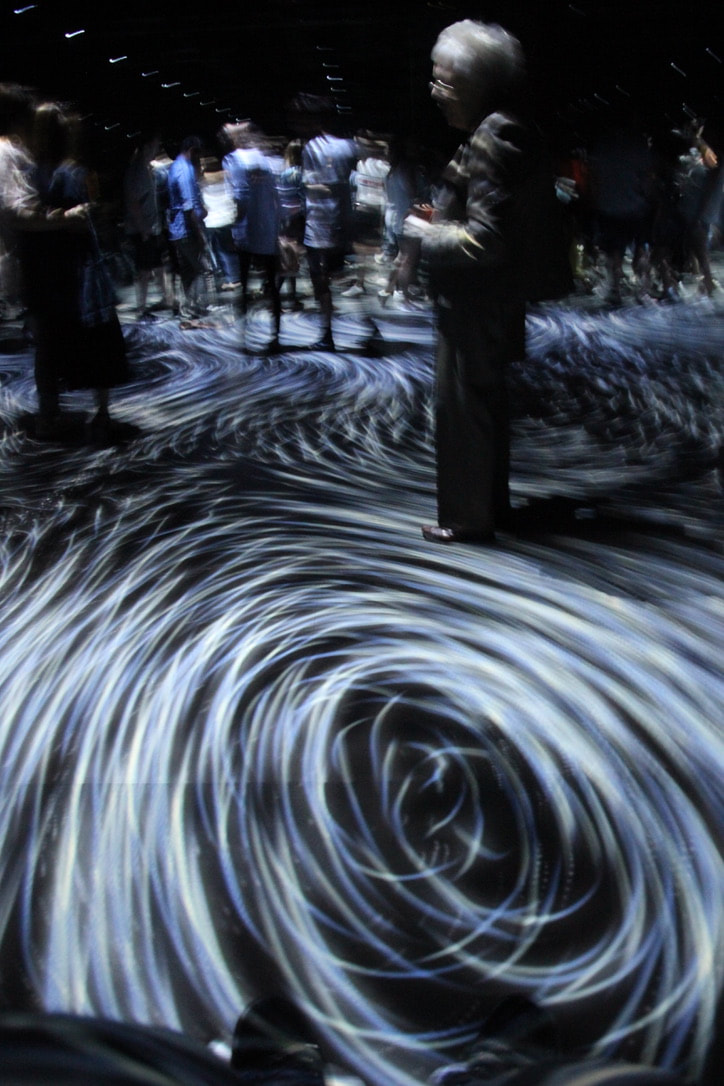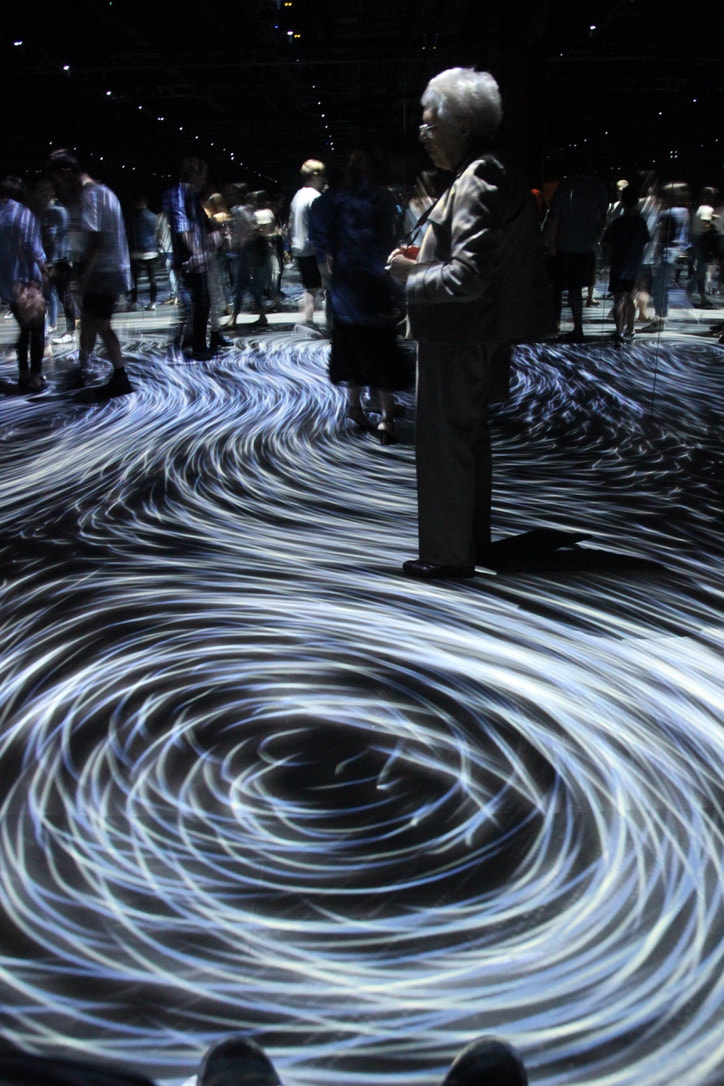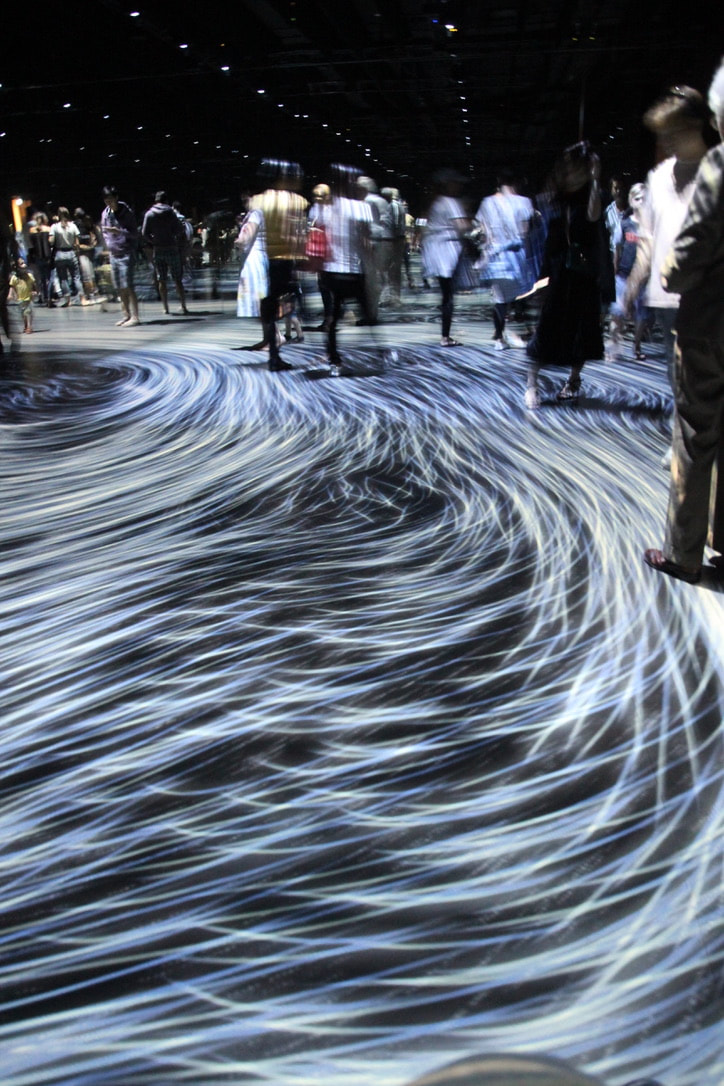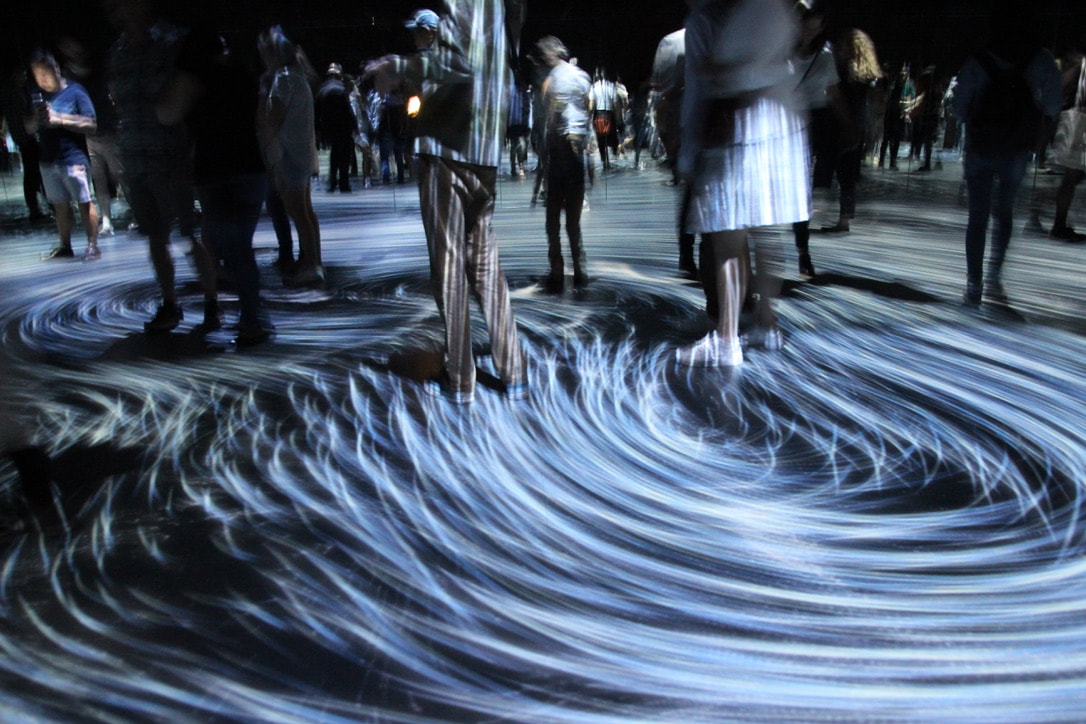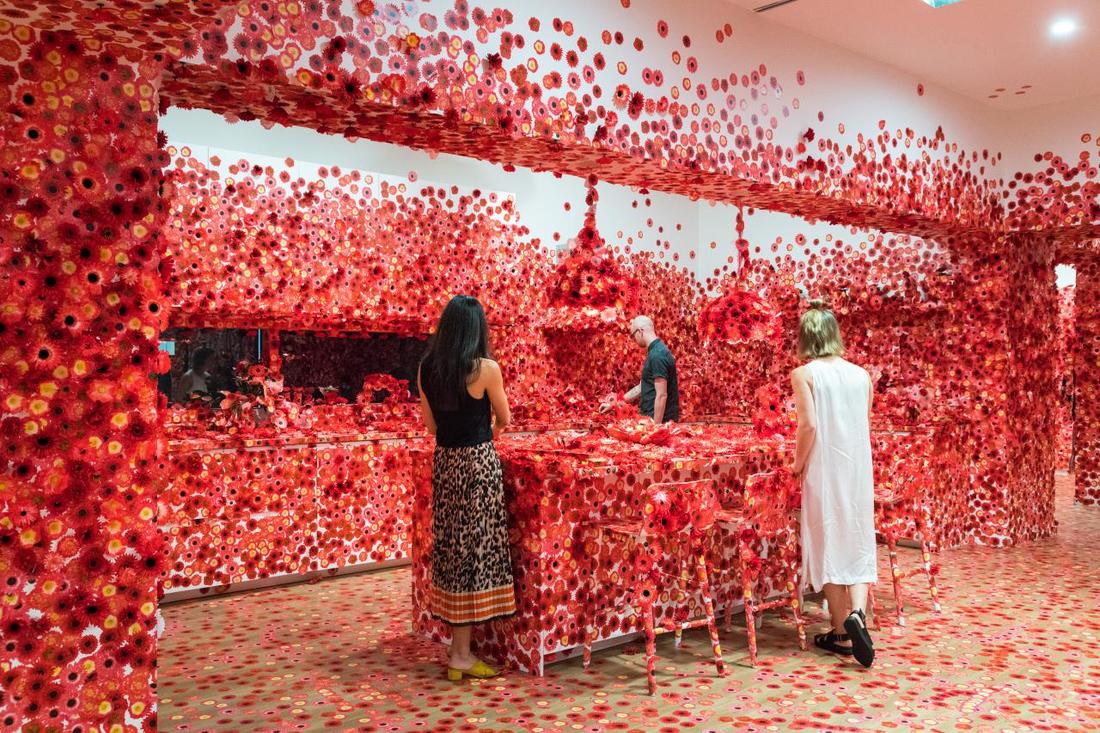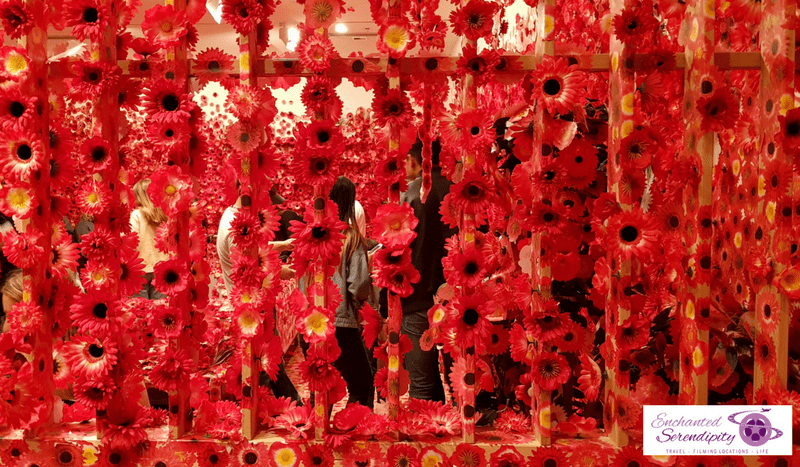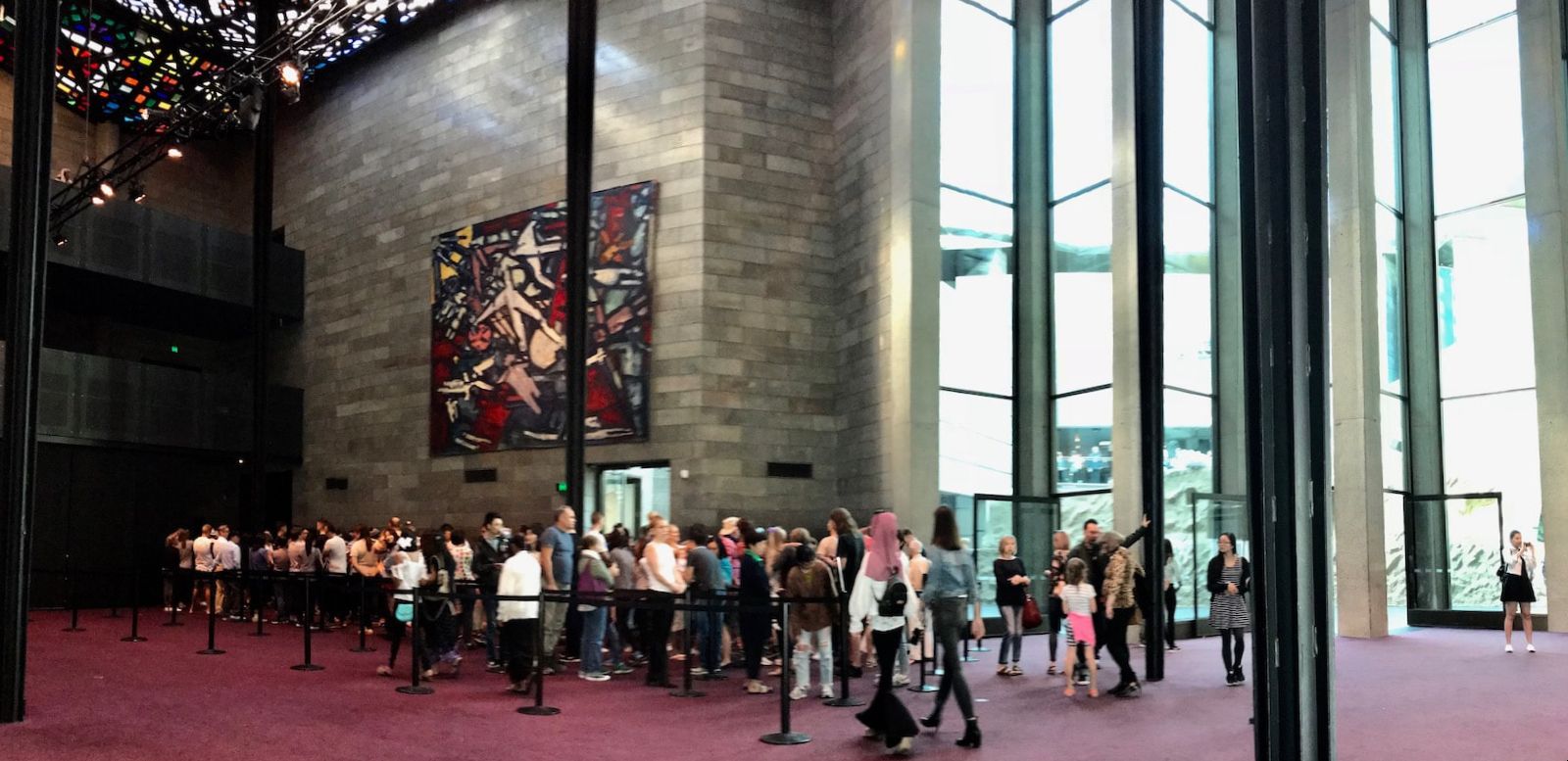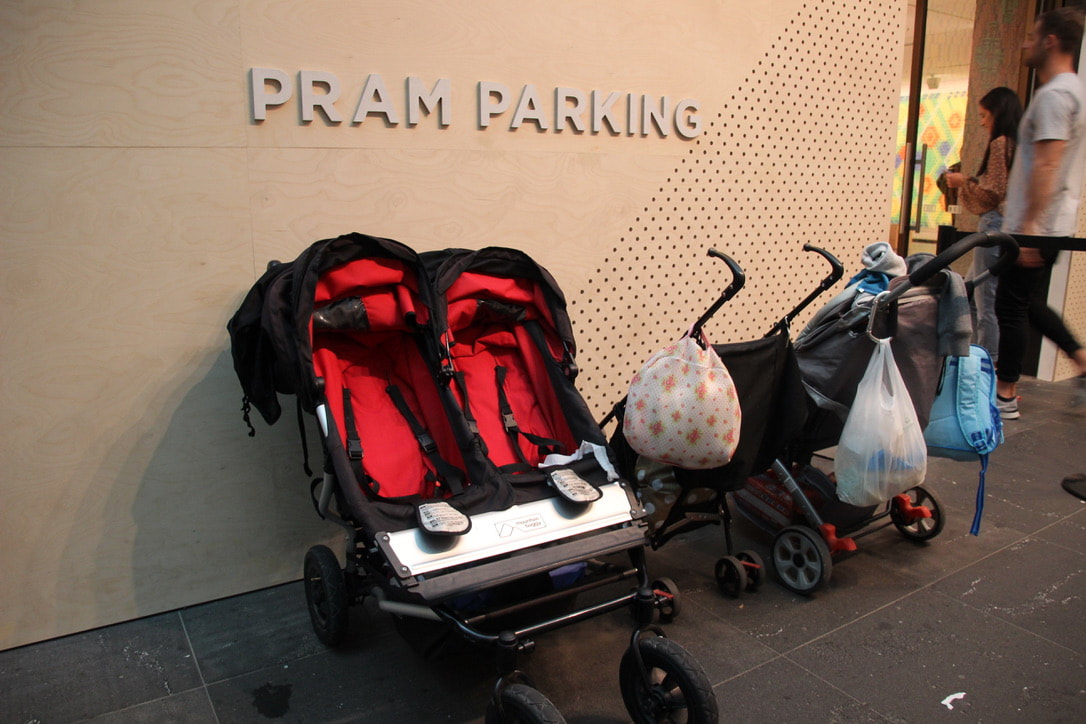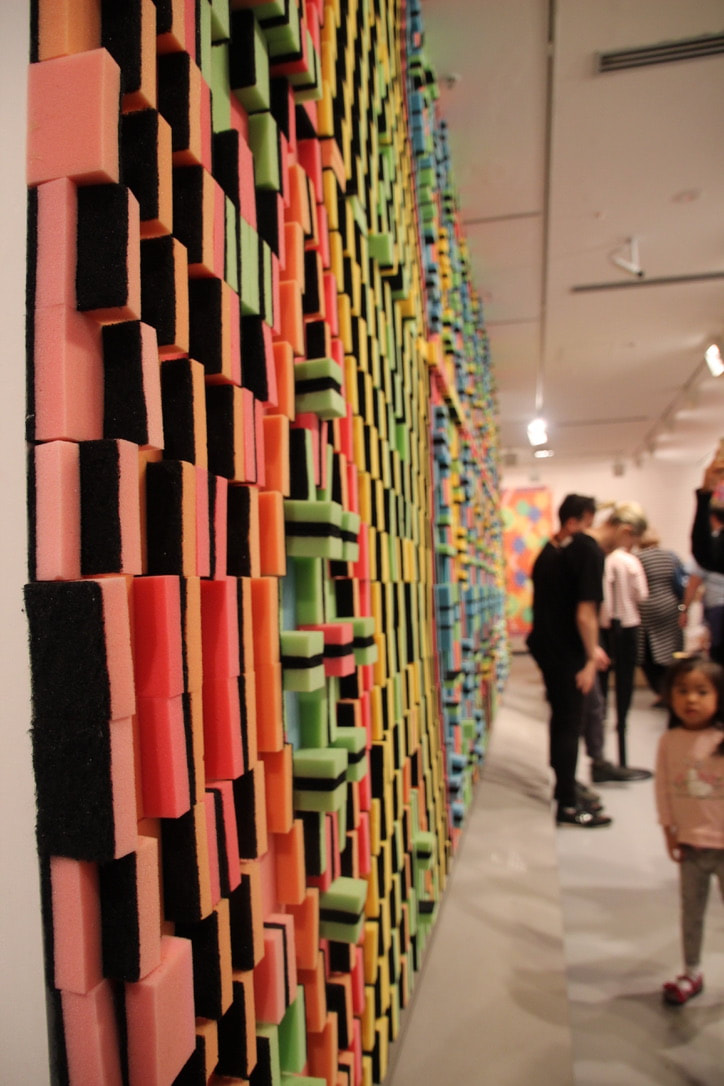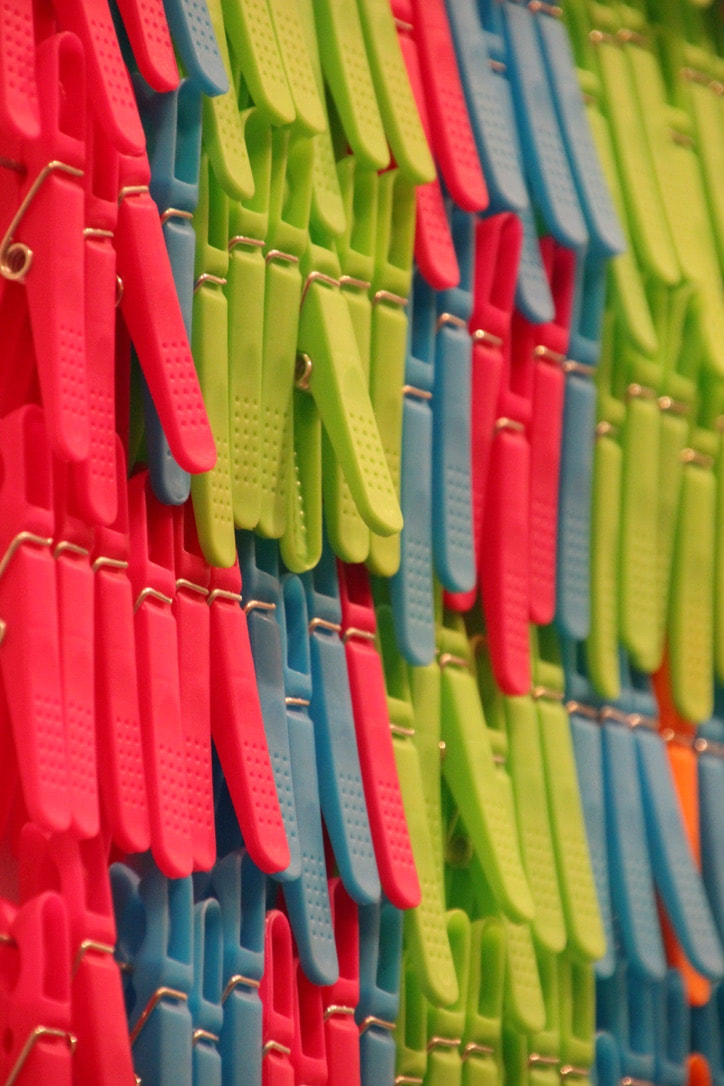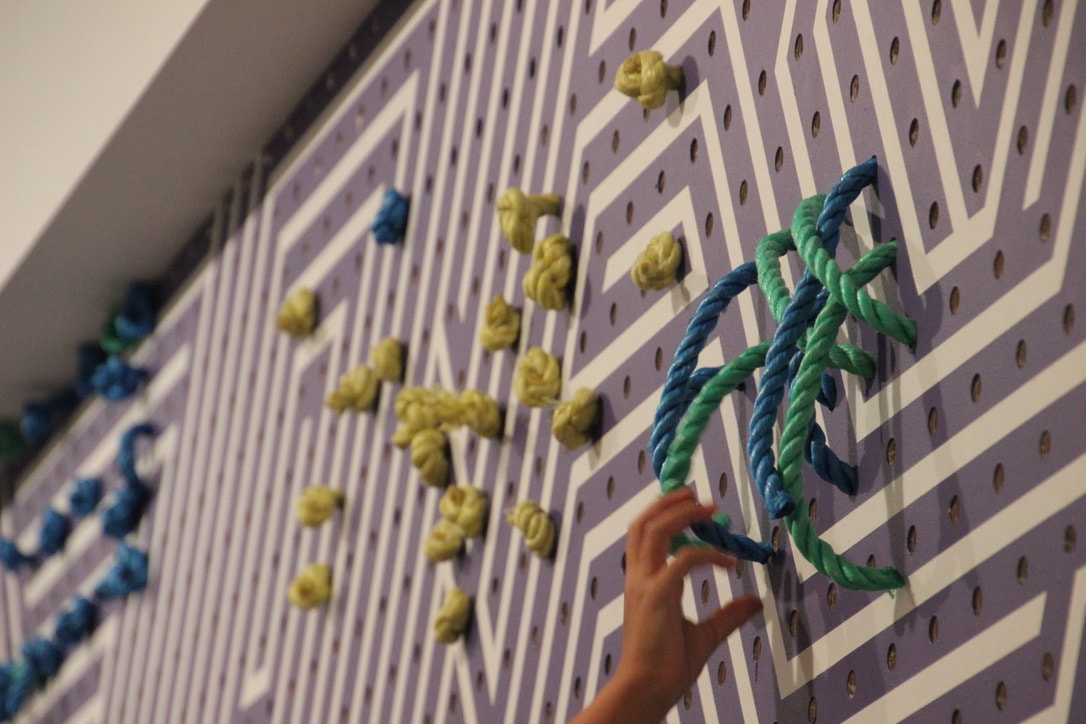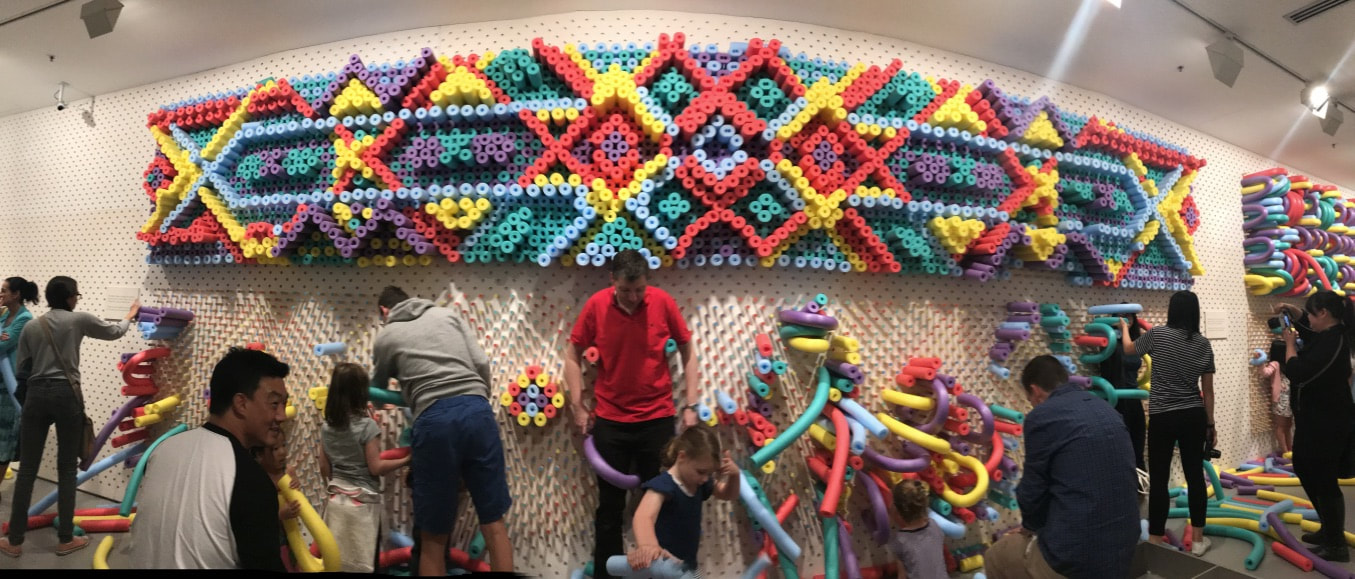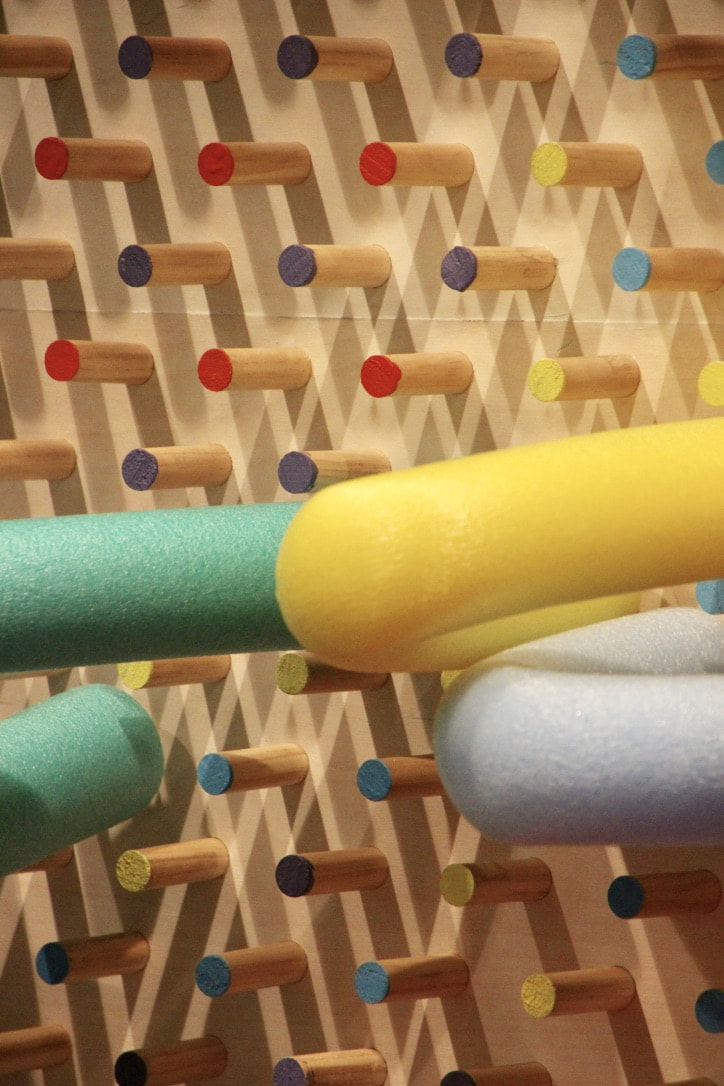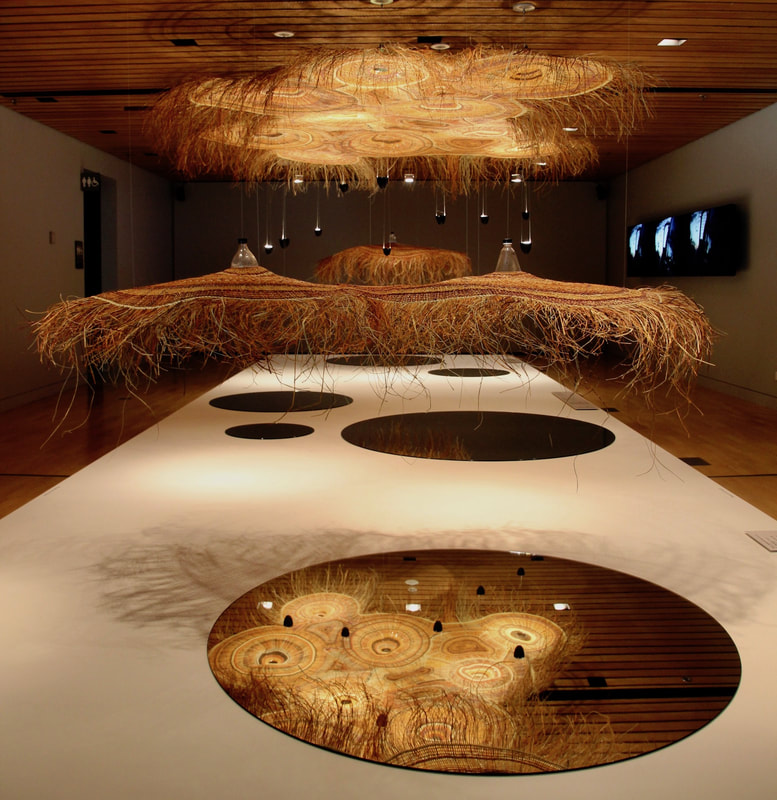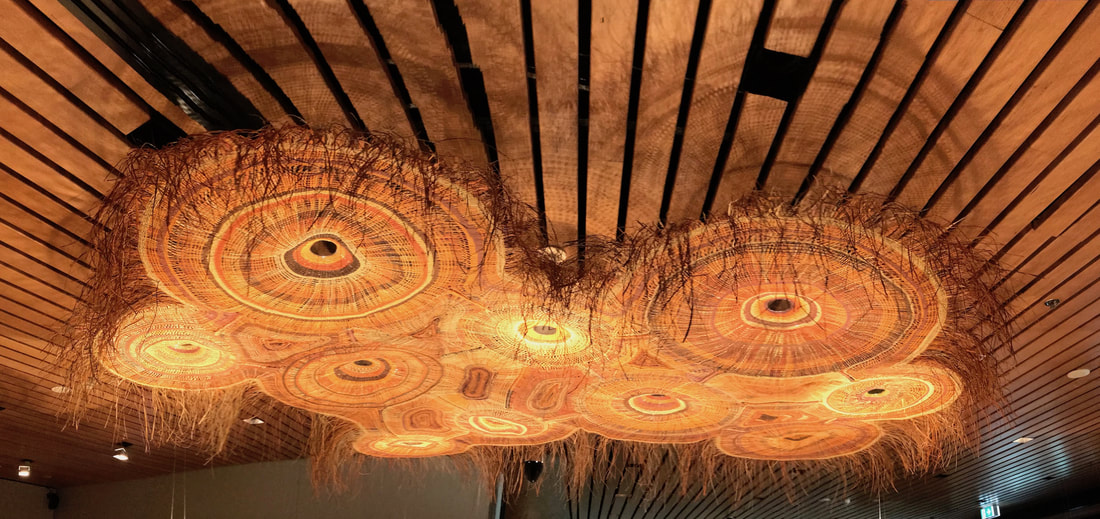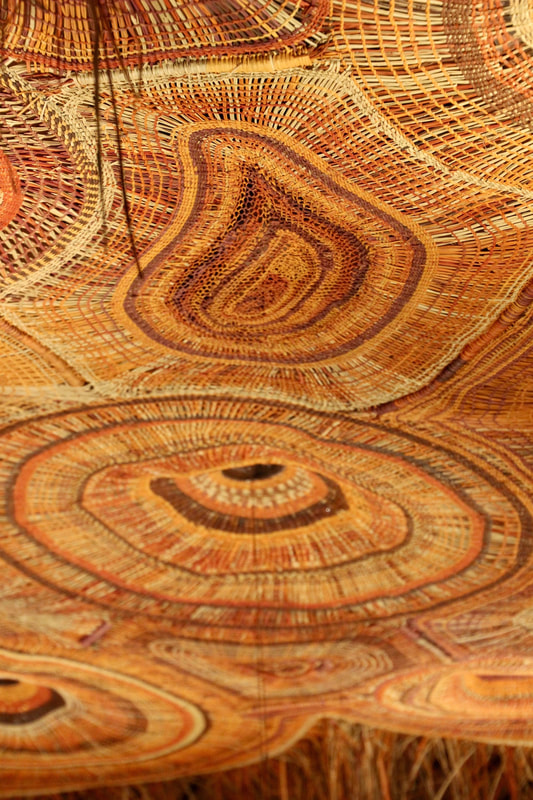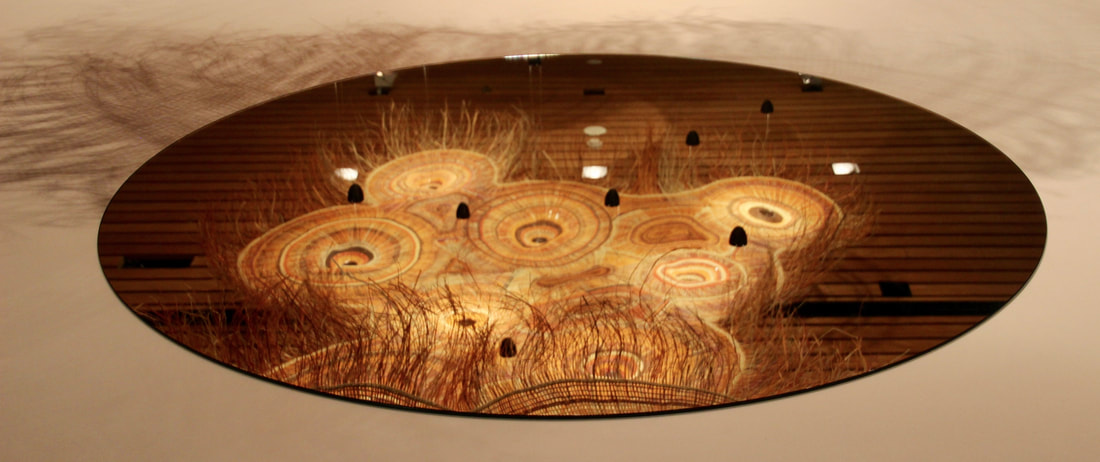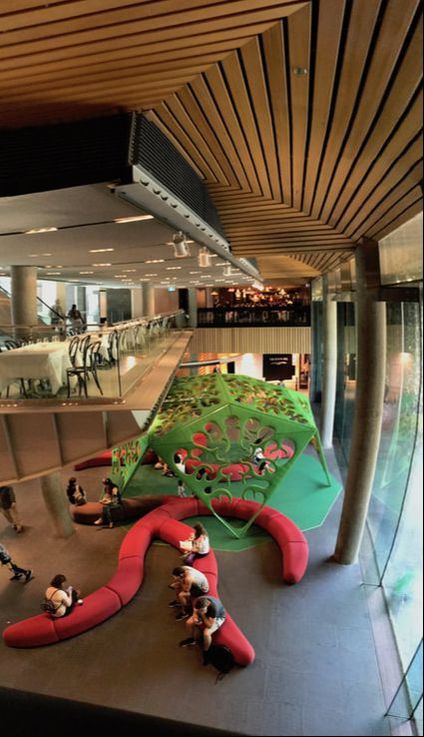|
Triennial was an exhibition featuring the work of over 100 artists and designers from 32 countries that was on at NGV on St. Kilda Rd, Melbourne. Sadly I only got to see it just before it ended and didn't have a chance to go back again. I would have loved to as so much of it just blew my mind when I saw it. I was like a kid in a candy store with so much to look at, as well as photograph. I haven't had a chance to photograph much nor felt inspired or had much time after the holiday. Below are some of the art that I got to see when Mum as well as information about the work. Enjoy the photographs and creativity of all the artists. BELOW - We loved this artists work. At first we couldn't work it out and then after studying it for a few minutes we got it. This is what his message is- "Olaf Breuning’s playful images address the absurdities, anxieties and excesses of contemporary life. The digital photo-collages show the artist acting as an enthusiastic representative of the generation connected to the internet 24/7. Everyday life is represented here as a set of chaotic, dreamlike vignettes in which the characters look back at the viewer inquiringly, while seeming to be in the process of undertaking a task or playing out a role. The artist uses collage and familiar phrases to navigate between ‘high’ and ‘low’ artistic practices with sarcastic with". BELOW - I loved this one as it has so much to say with all the photographs, most of it so clever as well as funny when you look at the way we live life these days. ABOVE LEFT - The guy on the right is holding a can that says "I can"..lol. ABOVE RIGHT - The things dangling over and from her head are tiny baby dolls. ABOVE & BELOW - These are all emojis. A world gone mad with using emojis as language to describe feelings and things? BELOW - People walk through an installation by artist Uji Handoko Eko Suputro aka Hahan. Inspired by the graphic design of the 1968 Mexico City Olympics – with a font which saw strong black and white parallel lines alongside the Olympic Rings; the viewer finds themselves walking among a maze of bright threads and mirrors, becoming part of the installation as they walk through it. BELOW - Hahan combines the aesthetics of traditional Javanese mythology with popular youth culture and underground comics. His works illustrate a point of tension between the local and the global and, while acknowledging its allure, critiques the mechanisms of an expanding global art market. The paintings that form part of his installation Young speculative wanderers, 2014–15, include references to artists and the sale of their work, with one depicting the facade of NGV International, with steps leading up to the Waterwall. The installation also incorporates hand-made Azulejo tiles which employ a traditional Spanish and Portuguese technique that is a legacy of European exploration, trade and colonisation in South-East Asia. IT WAS AMAZING! BELOW - This installation of geometric woollen forms was made by 45 women of Aurukun who would gather at Akay Koo’oila Women’s Art Centre each day to meet, work and share stories. Their creation is a symbol of peace, comfort and healing. Each individual ‘God’s eye’ derives its form and meaning from God’s eyes made in First Nations communities of West Mexico, which are believed to signify ‘the power to see and understand things unknown’. Like their First Nations counterparts in West Mexico, the Aurukun artists from Cape York, Queensland, have connections to sources of spiritual power in Country that go beyond the physical and deal with difficult situations and conditions. BELOW - Pascale Marthine Tayou creates large, colourful installations and sculptures that explore travel and the effects of globalisation. His work in the NGV Triennial Coloured stones (Pavés colorés), 2015, is an arrangement of quarried granite paving stones, each selectively sprayed with a primary colour. The paving stones reference times of social unrest during which they have been collected and used to combat police and anti-revolutionary forces; for example, during the French Revolution and the May 1968 student protests in Paris. The paving stones and range of colours point to the allegiances and divisions that make up any modern community, as well as to the concrete political history that lies beneath contemporary consumer culture.  BELOW - Known for her boundary-pushing installations using thread, yarn and weaving, Pae White’s installation (Untitled), 2017, uses graphic forms writ large as the starting point for an exploration of space. Acrylic yarn extends the outline of the flat shapes in three-dimensions, as solid lines within the gallery. Moving through the room and between the coloured forms shifts the viewer’s perception of space as new compositions of line, form and colour reveal themselves from different positions. White’s second work in the NGV Triennial, Spearmint to peppermint, 2013, is one of a number of recent tapestry works by the Californian artist, depicting the crumpled folds of crushed reflective foil. While initially the weave appears hyperreal and almost photographic, on closer inspection the effect reveals itself to be a vibration between material and printed image. This illusion is enhanced by what appears to be the transformation of dull cotton and polyester thread into reflective metal. BELOW - The black ambiguous mass of Shilpa Gupta’s sculpture Untitled, 2012–15, stands in contrast to the sound it produces, which is based on a text by the artist that imagines a world in which people can move freely across national borders. The work continues her investigations into border-making in India, after the country was partitioned in 1947, and specifically into the Bangladeshi enclaves. The borders between these sovereign tracts of land are unclear, and their inhabitants’ lives are highly regulated. Gupta’s practice focuses on zones in which real and imagined divisions are played out, be they borderlines, within language, or ideas of censorship and security BELOW - The part-human, part-animal and part-machine creation Contrology, 2016, looks as though it could be performing Pilates, and Contrology is, indeed, an early term for this fitness regimen. The bronze sculpture is one in a series by Camille Henrot that humorously explores Monday and feelings that the first day of the week inspires, from renewed faith in the possibility for change to despondency over the tedium of weekly routine. How humans impose order onto their experience has been the focus of much of Henrot’s creative output in recent years. I LOVED PHOTO BOMBING PEOPLES ENDLESS SELFIES BY INNOCENTLY STANDING BETWEEN THE LEGS OF THE SCULPTURE. BELOW - Zanele Muholi describes herself as a visual activist. Somnyama Ngonyama, 2015-16, which translates to ‘Hail the dark lioness’, is the first work in which Muholi presents herself as the model. She uses everyday objects as props and simple backdrops to examine concepts of self-representation and the contemporary phenomenon of the ‘selfie’. Muholi has also manipulated the appearance of her skin to appear as a deep, intense black. Discussing this, she wrote: ‘By exaggerating the darkness of my skin tone, I’m reclaiming my blackness’. These photographs are powerful self-portraits addressing issues of race, gender politics and debunking stereotypes of African women. BELOW - ‘Past’. This exhibit looks at origins, exploring life through the lens of death. Taking inspiration from ancient masks – which is very clear when looking at them, the exhibit uses 3D printing in a bid to blur human features and machine together. It is quite alien to look at with such amazing pieces of art existing here because of it. BELOW - teamLab (design studio) Toshiyuki Inoko (designer) Moving Creates Vortices and Vortices Create Movement 2017 interactive digital projection. The designers at Teamlab offer a digital installation which has been inspired by human, digital and spatial relationships.As visitors enter, the movement of people inside is tracked by sensors that via computer create projections. Thus, a visual vortex of sorts is created consisting of digital particles, expressing the movements of each person as they move within the space. ABOVE - These 4 pictures are a result of me doing swirles and turns in my wheelchair rather than just going in one direction. It was incredible to see how the pattern changed direction. BELOW - Installation view of Alexandra Kehayoglou, Santa Cruz River. Through the use of wool rugs, and a merging of site analysis, drone footage and photography, Santa Cruz River is such a fun inclusion – but one which has so much depth behind its creation. This design depicts the proposed site of two major hydoelectricity dams on the Santa Cruz River in Argentina, which remains the last free flowing wild river in the country. Whilst, there is no actual political agenda behind this piece, there is an undertone however about the tensions within globalisation; in particular those surrounding the negotiations between the Argentine and Chinese governments. Visitors could lay on the carpet and see the artwork through the mirror above. AGAIN ENDLESS SELFIES. BELOW - Flower Obsession re-creates a furnished domestic space – bedroom, kitchen, lounge, bathroom etc. This large-scale installation invites the viewer inside – not only to see the work, but furthermore to participate in it by placing a flower sticker motif down on any surface as they walk through.Kusama’s vibrant installation explores the concept of infinite; with a reference to hallucinations she had growing up which defined her very style as a result. Kusama started the installation decorating the dining table and floral tablecloth – which as the weeks progress will obliterate the transform the space into a stunningly spectacular environment. ABOVE - The line to get into see the red flower room! It was insane so we decided not to queue and just look through the glass window. Three of the above photos are from the web site. ABOVE - I have never see a PRAM PARKING AREA before! ABOVE & BELOW - This incredible wall was made up of sponges that you'd use when washing up. It was fabulous. How do people think of all these things? BELOW - This wall was made up of washing pegs. BELOW - This room was all about kids and adults actually interacting with the wall installations and having fun. These little girls are pushing these knotted rope cords through the wall. They could be used to make up a wall installation. BELOW - Children colour-match a mural of pegs with pool noodles at an installation by the Dutch art collective. Plus a few kids trying to tie up their parents. BELOW - In 2016 Alvaro Catalán de Ocón and members of his studio travelled to Ramingining in Arnhem Land to work with a group of Yolngu artists. The collaborative design process, led by Catalán de Ocón, devised a way to join weavings, repurposing traditional Yolngu mats as PET Lamp chandeliers.The Yolngu practice of weaving is intrinsically linked to the experience of being a woman, since the knowledge associated with collecting, processing and dyeing the pandanus plant is transmitted from mother to daughter. The combination of many artists’ hands instils in each mat the identity and place specific to each artist, as well as a connection with Country from which the materials have been gathered. BELOW - Victoria Amazonica 2017, was created by Brazilian designers Fernando and Humberto Campana in collaboration with Yarrenyty Arltere Artists, designers Elliat Rich and James Young and the Centre for Appropriate Technology – all based in Alice Springs in the Northern Territory. Based initially on a sketch Humberto Campana made in Alice Springs of a giant South American lily, this exuberant, large-scale soft domed structure features intricate embroidery by the Yarrenyty Arltere Artists that tells stories of rain, rivers and water.
0 Comments
Leave a Reply. |
AuthorIn a wheelchair permanently since early 2010 due to a disease called NMO. I am loving getting out and about in my wheels. My blogs capture my journey. Archives
January 2019
Categories
All
|
